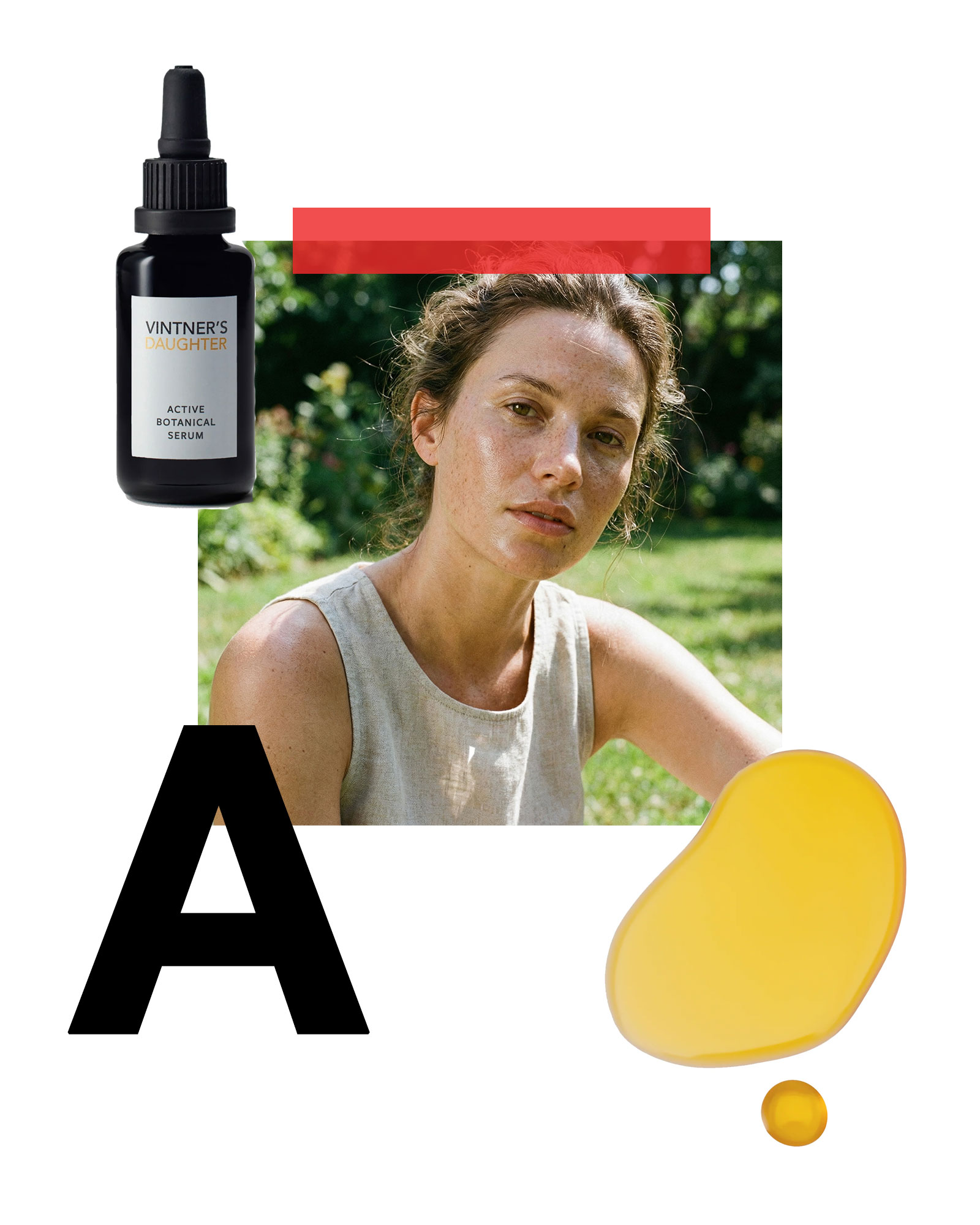
WHAT IT DOES:
Allantoin is a soothing ingredient that protects the skin. It is extracted from the comfrey plant’s root, and is often used in waxes. Allantoin is also a keratolytic agent, or a gentle exfoliant, meaning it’s great for smoothing and buffing sensitive skin.
HOW IT WORKS:
Allantoin essentially smooths and softens the skin, and is a great all-purpose exfoliant for all skin types, especially sensitive skin.
MG SAYS:
Allantoin is especially useful in treating reactive skin and encourages cellular regeneration due to its incredible healing, hydrating and reparative properties. Allantoin is ideal for stressed, compromised or sensitive skins.
WHAT IT DOES:
Almond oil is one of the best naturally-derived oils, and great for a number of purposes including to soothe inflammation, protect sensitive skin and moisturise dry skin. It is non-fragrant, meaning it’s fantastic for sensitive skin, and is derived directly from almond kernels.
HOW IT WORKS:
Thanks to a high number of fatty acids, almond oil is best for restoring moisture and elasticity to the skin, and can help counteract the effects of free radicals thanks to its high oleic acid composition. This combination allows it to both hydrate and protect the skin, making it a great all-rounder.
MG SAYS:
Mild and gentle, almond oil is perfect for those with sensitive or dry skin. Topical application of this nourishing oil will ensure your skin appears supple and hydrated.
WHAT IT DOES:
Aloe vera has been used for centuries to help heal the skin. Many will know its soothing properties as it’s long been used as a protectant following irritation — particularly after prolonged sun exposure or sun-induced burning. It helps to reduce inflammation, soothe, heal and hydrate the skin and is applied topically directly onto the skin.
HOW IT WORKS:
Taken from the aloe vera succulent, this plant-derived, gel-like substance has wonderful anti-inflammatory and antibacterial properties. It acts as a water-binding gel, drawing oxygen to the skin and helping heal dry or irritated skin. It can also help with redness, itching and wound healing — leaving a softer, calm complexion.
MG SAYS:
A true remedy for sensitive, stressed-out complexions, Aloe Vera shares the same pH as skin, making it perfect for those prone to irritation.
WHAT IT DOES:
Alpha Lipoic Acid (ALA) is a powerful skincare ingredient and a favourite for many formulations. It is found naturally occurring in every cell of the body, and can have incredible antioxidant powers. An essential fatty acid, ALA can help minimise lines, wrinkles and pores, and is best for those wanting to combat poor skin quality, laxity and texture.
HOW IT WORKS:
Thanks to anti-inflammatory properties, Alpha Lipoic Acid is best used to smooth the texture of skin, and can help reduce signs of ageing, redness and puffiness. Its status as a network antioxidant means it can be combined with other powerful antioxidants to harness their ingredients to work harder. For this reason, it’s often found alongside Vitamin C, Vitamin E and coenzyme Q10, and can work in tandem to improve the quality of the skin.
MG SAYS:
When paired together, Alpha Lipoic Acid and Vitamin C work synergistically. Try pairing the two together by using a Vitamin C serum in the morning and a treatment or serum containing Alpha Lipoic Acid in the evening.
WHAT IT DOES:
Apple cider vinegar is derived from fermented apple juice and has been used to treat skin ailments since 400 BC. It is a potent substance containing high levels of antioxidants that promote skin healing and immunity. It is antifungal, antiviral and antibacterial.
HOW IT WORKS:
Due to its acidic nature, apple cider vinegar hosts a number of enzymes that are beneficial for skin health. These help to maintain the skin’s natural pH levels while also combating inflammation and irritation. Plus, the high tannin content has purifying and astringent properties, which makes it a wonderful chemical exfoliant.
MG SAYS:
I love apple cider vinegar – it’s a hard-working, multi-purpose substance that can be easily bought from the supermarket. My fridge is never without it.
WHAT IT DOES:
Apple seed extract is an intense antioxidant oil derived from the seeds of apples with a dark orange colouring. It is full of AHAs (Alpha Hydroxy Acids) meaning it’s a superlative chemical exfoliant and leaves a refreshing sensation when applied directly to skin.
HOW IT WORKS:
The naturally-occurring carbohydrates found in apple seed extract work concurrently to create an epidermal barrier, sealing in moisture and preventing further water loss, meaning skin that is dull, oily or congested will benefit most.
MG SAYS:
Apple seed extract is a perfect remedy for dull or congested skin thanks to its exfoliating properties.
WHAT IT DOES:
Apricot oil, which is extracted from apricot seeds, smooths and hydrates the skin, giving a supple texture thanks to its emollient nature.
HOW IT WORKS:
Apricot oil is rich in Vitamin E, which helps promote skin healing, and antioxidants. As an emollient, apricot oil boosts moisture by tapping into the skin’s natural lipid reserves, forming a barrier to deliver and then lock in hydration. This leads to firmer and more supple skin, leaving a glowing appearance thanks to increased hydration.
MG SAYS:
Referred to as ‘the nectar of the gods’ in Greece, apricot oil makes the skin velvety soft and is often used for massages. This lightweight oil is seamlessly absorbed by the skin and results in a natural radiance. It’s best used for those with dry skin.
WHAT IT DOES:
Argan oil has been well known for its hair care benefits for some time, however this much-loved ingredient can be used on the skin, too. Sourced from Argan trees native to North Africa, Argan oil helps protect and soften the skin, providing ample hydration by delivering a cocktail of moisturising elements.
HOW IT WORKS:
Despite being an oil, Argan oil is great for those with acne as it helps the skin balance its own oil production. With Vitamin E, fatty lipids and acids, plus antioxidants, Argan oil can help fight free radicals and restore the skin’s own barrier, meaning it can help heal and protect at the same time.
MG SAYS:
Argan Oil is the ultimate multitasker! Use as a makeup primer to give your foundation a luminous glow, apply to dry, split ends to nourish hair or use on devitalised, cracked cuticles.
WHAT IT DOES:
Not just a pantry staple, avocado oil boasts an array of benefits for the complexion. This non-fragrant plant oil replenishes moisture, smooths and nourishes for supple, hydrated skin.
HOW IT WORKS:
A rich ingredient full of benefits for dry and dull skin, avocado oil is full of antioxidants, fatty acids and vitamins, including vitamins A, D and E. Great for sensitive skin thanks to its soothing antibacterial properties, avocado oil can be used on most skin types but is best suited for those with sensitive skin. It is often found combined with other ingredients in common skincare formulations, thanks to its emollient properties which make it a wonderful carrier oil.
MG SAYS:
This multi-tasking superfood imparts an abundance of benefits on skin. A cleansing product that contains avocado oil can help to remove dead skin cells and calm the appearance of inflammation of the sebaceous glands and pores, resulting in a clearer complexion.
WHAT IT DOES:
Arbutin helps reduce the appearance of pigmentation, as it suppresses tyrosinase which forms melanin. Extracted from the bearberry plant, Arbutin brightens, refines and clarifies the skin for an even tone.
HOW IT WORKS:
Arbutin helps lighten the skin, inhibiting the production of tyrosinase. It can help reduce the effects of pigmentation on the skin, generally lightening and brightening the skin to help combat common pigmentation concerns including melasma-induced dark spots.
MG SAYS:
Since arbutin’s active component is released slowly, it can be less irritating than other skin-lightening agents and ideal for those with sensitive skin.
WHAT IT DOES:
Astaxanthin is an aquatic carotenoid (it gives salmon its pink colouring) which can help with collagen synthesis and overall skin repair. Red in colour, Astaxanthin can help provide immune support and fight free radical damage and oxidation, making it a popular skincare ingredient.
HOW IT WORKS:
Astaxanthin can help mask or slow the effects of ageing thanks to its ability to block free radicals which damage the skin cells. It acts as a barrier between the skin and outside aggressors, such as pollution, providing potent effects on smoothing, softening and protecting the skin.
MG SAYS:
Astaxanthin is commonly referred to as “the king of the carotenoids” due to its remarkable antioxidant profile and ability to scavenge free radicals while improving collagen stores, skin elasticity and smoothness. This red-hued molecule is commonly derived from wild caught salmon, krill, trout, algae and lobster.
WHAT IT DOES:
Water is an essential part of skincare, both for products and for internal hydration. Often the main ingredient in skin formulations, water acts as an important mixing agent.
HOW IT WORKS:
Hydrating the body, skin cells need water to function. By plumping these cells, the skin appears refreshed and radiant.
MG SAYS:
Water-based products are wonderful for adding moisture and hydration to all skin types. Acneic, hyper-sebaceous or congested skins in particular benefit from using aqua as a medium for delivering more potent vitamins, minerals and antioxidants into the skin as they do not disrupt the acid mantle and are non-comedogenic.
WHAT IT DOES:
While Azelaic acid is not an AHA or BHA, it is a wonderful, gentle exfoliant which can help unclog pores and refine the skin’s surface. Providing skin with a healthy dose of antioxidants, Azelaic acid buffs away dead skin to reveal glowing, radiant skin.
HOW IT WORKS:
Thanks to its exfoliating properties, Azelaic acid helps speed up cell turnover which in turn allows the skin to regenerate and replenish.
MG SAYS:
Azelaic acid is a powerhouse multi-tasker for the skin. It is an effective leave-on exfoliant that works to gently clean out pores as well as delivering potent antioxidant protection and effectively reduces reactivity, redness and textural irregularities.
WHAT IT DOES:
Azulene extract is both an antioxidant and anti-inflammatory product, which helps combat free radicals. Distilled from the chamomile leaf, azulene extract can shield the skin from incurring more damage, and can be a wonderful repairer.
HOW IT WORKS:
Azulene extract works to neutralise free radicals, which can cause fine lines, pigmentation and redness. By combating these free radicals at the source, azulene helps on a cellular level to restore and repair the skin from the inside out.
MG SAYS:
Azulene has an anti-inflammatory effect on the skin, preventing the skin’s immune response to aggressors or irritants. It is particularly healing for redness and swelling and offers antioxidant protection against free radical damage and oxidative stress. It is popularly used in serums and creams designed to target inflammatory acneic conditions.

WHAT IT DOES:
Hailed as a natural version of retinol, bakuchiol is a plant-based ingredient that has fantastic benefits for treating many skin concerns - from acne through to aging. An antioxidant found in the seeds of the Psoralea Corylifolia plant native to India, bakuchiol has long been put to medicinal use for its healing, calming and soothing properties.
HOW IT WORKS:
Much like retinol, bakuchiol works by kickstarting skin cell turnover and collagen production, which becomes increasingly important the older we get because the body’s natural renewal process slows down as we age. A build-up of dead cells on the skin’s surface can lead to uneven texture and tone, dehydration and rough/dry patches. Meanwhile, a decline in collagen levels can result in visible signs of ageing such as fine lines, wrinkles, and a loss of elasticity.
MG SAYS:
Bakuchiol has anti-inflammatory and antibacterial properties, making it more of a mellow choice for those with sensitive and/or dry skin. Its strong antioxidant profile means it can be used morning or evening (whereas retinol should only be used in the evening when there is no chance of sun exposure). It’s also safe to be used by those pregnant or breastfeeding.
WHAT IT DOES:
A superfood sourced from parts of Africa, the oil and powder sourced from the baobab tree can be incredibly hydrating, and is used to soften the skin, resulting in a smooth, hydrated complexion.
HOW IT WORKS:
Rich in Vitamins A, B and C, minerals, antioxidants and fatty acids, baobab oil helps hydrate, hydrate, hydrate, improving the overall texture and elasticity of the skin.
MG SAYS:
Move over acai! Akin to a multi-vitamin for the skin, this must-have new wonder ingredient contains six times as much Vitamin C as oranges as well as a plethora of other minerals and nutrients.
WHAT IT DOES:
Containing L-arbutin, Daisy flower extract is a compound best known for helping with existing pigmentation problems. L-arbutin helps to lighten skin, which in turn allows it to fight away pigmentation.
HOW IT WORKS:
L-arbutin helps lightens the skin by interfering with pathways that lead to the formation of melanin or pigment, which colour our skin and create pigmentation.
MG SAYS:
Daisy flower extract is a natural melanocyte blocker that works to inhibit the development of pigment irregularities in the skin. It effectively lightens and brightens existing dark and sallow patches of skin and has been used for cosmetic and medicinal purposes since the ancient Egyptians.
WHAT IT DOES:
Great for masking, Bentonite is a powerful detoxifying ingredient which helps draw out impurities from the skin. It can help remove make-up, oil and excess cell build up, revealing clarified and clear skin. It has light exfoliating properties which help buff out the skin’s surface, encouraging cell turnover.
HOW IT WORKS:
As an absorbent, Bentonite works best when mixed with water. In its clay form, Bentonite helps draw out chemicals from the skin, including metals and pollution which might be sitting beneath the skin’s top layer. It helps promote cell turnover and when removed, leaves the skin feeling soft and supple.
MG SAYS:
Bentonite clay attracts toxins and pulls them from the body. It is especially useful in masks for congested skin and those who have been exposed to pollution via air travel and urban living. It is best not to let clay-based masks fully dry on the complexion — mist with a little water or essence if the mask dries out to quickly upon application, and remove before it is fully dried.
WHAT IT DOES:
A favourite for fighting blemishes, benzoyl peroxide had traditionally been one of the most popular agents for treating acne-causing bacteria, however it is incredibly strong so not often recommended in modern regimens unless supervised by a professional.
HOW IT WORKS:
When applied topically, benzoyl peroxide releases oxygen into the skin follicle, killing bacteria within. This in turn stops acne being formed at the source, preventing blemishes and acting as an anti-inflammatory agent to reduce redness.
MG SAYS:
While benzoyl peroxide can be wonderful for treating acne, it can also be incredibly harsh, causing dryness and sensitivity, so consider using it only once a day short term if you truly have seborrheic skin. Try an AHA or BHA exfoliant before using benzoyl peroxide for greater efficacy and ideally only use benzoyl peroxide under the direction of a clinician.
WHAT IT DOES:
Beta glucans are fantastic for calming and healing the skin, and can help alleviate signs of redness. Perfect for sensitive skin and easily sourced from the kitchen, the Beta glucans found in oats provide an effective way to soothe and protect sensitive skin.
HOW IT WORKS:
High in antioxidants and with free radical-neutralising powers, Beta glucans can help prevent further cell damage by inhibiting oxidative stress. Plus, their soothing properties provide moisture for damaged skin and help minimise redness and inflammation.
MG SAYS:
Beta glucan has an impressive absorption rate considering its larger molecular size. Beta glucans are not naturally produced by the body — they are derived from grain bran and plant cellulose. They are essential for modulating the immune function of the skin and for its ability to fight off pathogens. Beta glucan also offers antioxidant properties and is especially useful for soothing and calming the skin when used in conjunction with traditional retinols.
WHAT IT DOES:
Extracted from the chamomile flower, Bisabolol is a popular soothing ingredient, helping the skin hydrate and heal.
HOW IT WORKS:
Antimicrobials within Bisabolol can help kill bacteria, which in turn help stop breakouts. In tandem, and thanks to its panthenol concentration, Bisabolol can help with healing and hydration, stimulating the skin’s own healing response for faster cell turnover.
MG SAYS:
Bisabolol is the main component in chamomile essential oil and presents as a more concentrated form of pure chamomile extract. It is often used in formulating products like creams and serums due to its ability to boost the absorption rates of other ingredients. This wonderful healing agent also works to moisturise, soften pigment and act as an antimicrobial agent.
WHAT IT DOES:
A super gentle exfoliant, Bromelain buffs away dead skin cells in a wonderful alternative to more intense acids.
HOW IT WORKS:
As an enzyme, not an acid, Bromelain is a gentle exfoliant which can help remove excess oil and dirt build up in the skin, turning over clearer, fresher skin.
MG SAYS:
Bromelain is actually an enzyme derived from pineapple. It is effective at digesting dead skin and also boasts beneficial antioxidant properties. It contains soothing and anti-inflammatory properties, making it a suitable exfoliant for sensitised or post-procedural skin conditions.
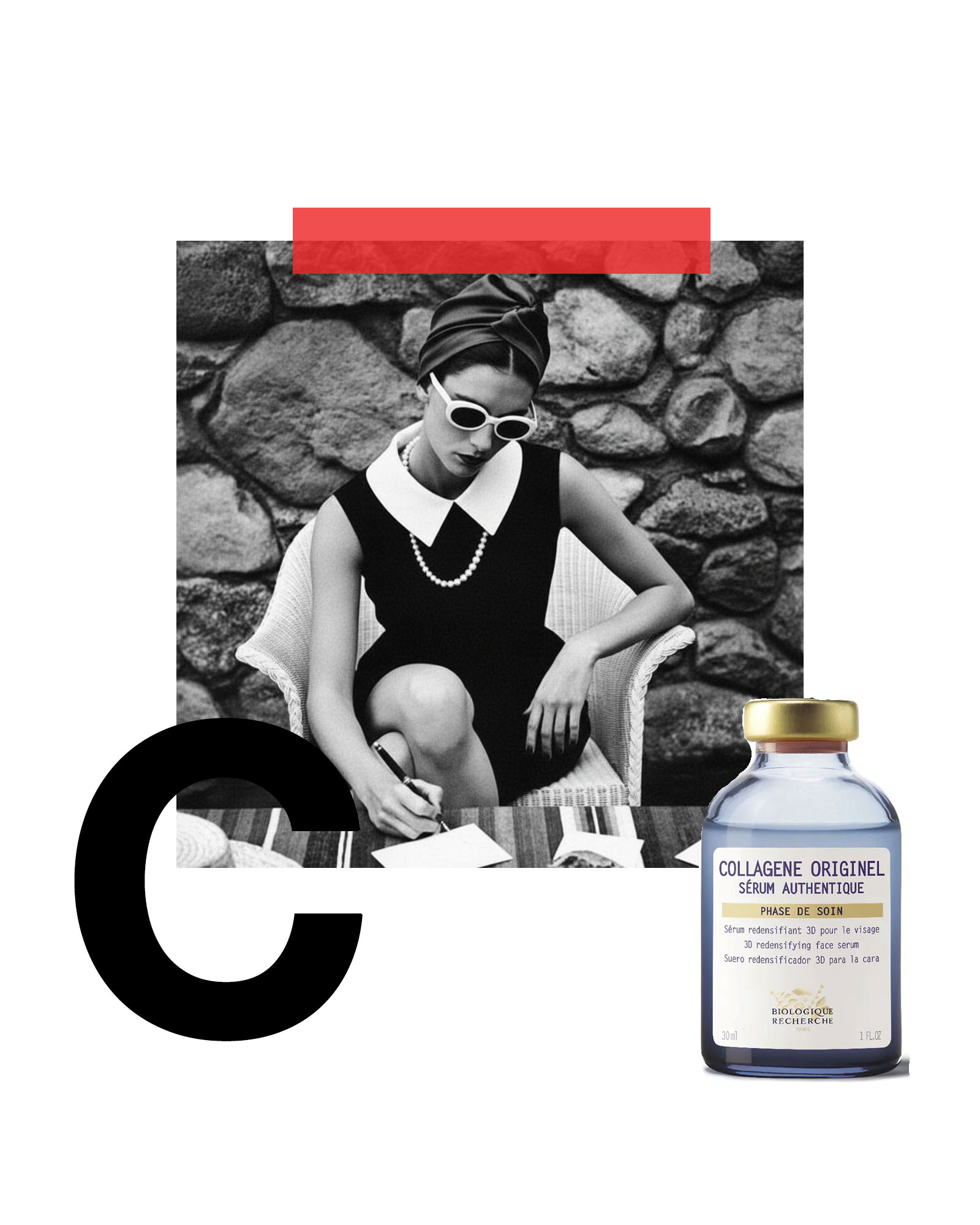
WHAT IT DOES:
Just like a cup of coffee, caffeine helps wake our skin up, and works to firm, brighten and tighten. Often used in eye products, caffeine can help reduce puffiness in the delicate under-eye area.
HOW IT WORKS:
Caffeine’s circulation-boosting properties allow it to help restore clarity and brightness to the skin’s complexion. It can help reduce the build-up of fluid thanks to anti-inflammatory properties, and can also help tighten areas with cellulite.
MG SAYS:
Say goodbye to dry, flaky skin and the stubborn look of cellulite. Caffeine based products make for great natural body scrubs because they can stimulate blood flow, which in turn reduce the appearance of cellulite.
WHAT IT DOES:
Calendula flowers are full of healing and anti-inflammatory properties, allowing the skin to be nourished and hydrated while also detoxifying and calming.
HOW IT WORKS:
Wonderful for inflammation, calendula, which contains carotenoids, nourishes the skin and supports the structure of our cells. Helping moisturise dry skin is one of the most common uses of calendula, thanks to the ingredient’s ability to hold moisture.
MG SAYS:
I love calendula oil, it is distilled from the petals of the marigold plant and is quite sticky in texture. It is one of the most effective treatments in reducing inflammation related to eczema, psoriasis and dermatitis and also offers antibacterial and immunostimulant properties for all skin types.
WHAT IT DOES:
A common ingredient in skincare products, castor oil helps to cleanse with soothing. It is often found in soaps, shampoos and topical creams.
HOW IT WORKS:
A wonderful binding agent, castor oil can hold many different ingredients together to create easy to use formulations. It is also an emollient, with the oil known for helping soften skin and add moisture.
MG SAYS:
Castor oil has recently shot to fame thanks to the Kardashians, who are said to rub the oil into their brows and lashes to condition and promote growth.
WHAT IT DOES:
Centella asiatica, or Gotu Kola, has profound healing properties, and helps rebuild collagen, stimulate new cell growth and improve blood circulation. In turn, it can lead to a brighter, more healthy-looking complexion.
HOW IT WORKS:
By stimulating circulation, centella asiatica helps to brighten the skin. In turn, its high percentage of Vitamins C, A, B1 and B2 work together to provide overall strength to the skin’s cells.
MG SAYS:
Also known as Gotu Kola, centella asiatica contains a vibrant mix of amino acids, beta carotene, fatty acids, and phytochemicals all of which are essential for skin health. It is a wonderful ingredient for those who wish to brighten and energise their complexion with the added benefit of antioxidant protection.
WHAT THEY DO:
Naturally occurring in the body, ceramides are fatty acids which have serious reparative qualities, helping to restore the skin’s own moisture barrier to lock in hydration and resulting in overall glowing and soft skin.
HOW IT WORKS:
Ceramides retain water and encourage hydration from within, and when applied topically can help restore some of that hydration we lose as we age. They help directly improve the skin’s elasticity, and inject a serious dose of moisture right into the cells thanks to their naturally occurring fatty acids.
MG SAYS:
Ceramides are ideal for improving the appearance of stressed, sensitive, scaly, rough, dry, aged or sun-damaged skin.
WHAT IT DOES:
Derived from olives, cetearyl olivate helps with skin strength and hydration thanks to its emulsifying properties.
HOW IT WORKS:
Often found in other products, including many hair conditioners or body creams, cetearyl olivate is used as an emulsifier to soften the skin.
MG SAYS:
This emollient works to replenish the lipids in the skin as well as giving creams and serums a sumptuous texture. It is useful in providing comfort for dryer skin conditions and in the treatment and softening of scar tissue.
WHAT IT DOES:
With a number of key ingredients derived from chamomile, the overall flower itself is rich in benefits. From anti-inflammatory to soothing properties, this antioxidant-rich ingredient is most often used to soothe and heal.
HOW IT WORKS:
Ultra calming, chamomile is filled with flavonoids, which help alleviate redness and itchiness. Anti-inflammatory by nature, chamomile’s soothing properties can relieve irritated, red or itchy skin.
MG SAYS:
Can’t make it to London to indulge in a signature Eve Lom facial? No problem, you can recreate the legendary facialist’s treatment at home — she harnesses the calming effect of this plant extract by applying gauze soaked in chamomile to the faces of her clients as a part of the skin ritual.
WHAT IT DOES:
Despite its harsh exterior, charcoal is a wonderful detoxifier, known to draw out impurities. Perfect for removing oil and helping with blemishes, charcoal helps purify and clarify the skin.
HOW IT WORKS:
One of the world’s best natural absorbers, charcoal essentially draws out impurities from the skin, including dirt and excess oil. Plus, it’s antibacterial meaning it’s perfect for acne-prone or oily skin.
MG SAYS:
Whilst highly effective at drawing out dirt, excess oil and impurities, charcoal is also renowned for being ultra-gentle and therefore is ideal for angry, reactive complexions.
WHAT IT DOES:
Essential for healthy, functioning skin, cholesterol helps keep our barrier intact and supple, and regulates the amount of fatty acids in our skin. The result? Hydrated and smooth skin.
HOW IT WORKS:
Cholesterols are either plant or animal derived, which then bind with water to moisturise and hydrate. They can also be added to creams as a thickening agent as an extra dose of moisture.
MG SAYS:
Cholesterol is a naturally occurring molecule in the skin, responsible for ensuring the efficient function of the skin’s lipid barrier as well as maintaining optimal moisture levels. It is a fundamental ingredient in ensuring the skin is strong, resilient and can fight off external aggressors, pathogens and irritants.
WHAT IT DOES:
Chondroitin sulphate is an essential building block of our body, helping grow healthy cartilage. It is also used as a softening agent in skincare.
HOW IT WORKS:
Chondroitin sulphate inhibits matrix metalloproteinases (MMP) which destroy the skin collagen network. It reinforces the connective tissue where collagen and elastin and holds hyaluronic acid to ensure the skin remains plump, springy and firm.
MG SAYS:
Chondroitin Sulfate is the derivative of a naturally occurring structural molecule present in the connective tissue of the skin. It is present in the matrix where collagen and elastin reside. It is especially beneficial for skins suffering from sun damage, laxity and post-menopausal skins that are no longer synthesising collagen at a adequate rate.
WHAT IT DOES:
Citric acid is a popular and powerful exfoliator. Found in (surprise!) citrus fruits including oranges, lemons and grapefruits, citric acid helps speed up cell turnover to reveal glowing skin.
HOW IT WORKS:
A type of alpha-hydroxy acid (AHA), this chemical exfoliator helps remove dead skin cells and reset the skin’s outermost barrier. It can help combat the appearance of fine lines, scarring and spots.
MG SAYS:
Citric acid is often used in skincare to regulate acidity and is fantastic for helping to achieve a smooth, even skin texture by gently exfoliating. Derived from citrus fruits, this AHA also gives products a refreshing, zesty scent.
WHAT IT DOES:
One of the most popular types of mask, clay helps refine pores and draw impurities out of the skin, making it ideal for acne-prone skin.
HOW IT WORKS:
Clay’s ability to draw out impurities from the skin makes it a wonderful mask. It can both absorb excess oil while tightening and remineralising the skin, leaving the skin refreshed and rejuvenated.
MG SAYS:
For oilier skin types, stick to using bentonite clay due to its superior absorption, tightening and acne-clearing abilities. For drier or more sensitive skin types, white kaolin clay is a better option for a more gentle treatment.
WHAT IT DOES:
Derived from coconuts, cocamidopropyl is a foaming agent used in many cleansers. However, its gentle nature makes it better than other foaming agents for sensitive skin.
HOW IT WORKS:
Creating a gentle lather, cocamidopropyl lifts away dirt and grime, helping cells turn over for a fresh complexion without stripping essential oils and moisture from the surface.
MG SAYS:
Cocamidopropyl is an incredibly gentle cleansing agent that creates a soft lather in cleansers. It is often found in baby products and baby shampoos due to its mild effect.
WHAT IT DOES:
Cocoa butter and cocoa powder are derived from the same plant, the cocoa tree, but have very different uses. Cocoa butter’s rich, creamy texture is known and loved for its nourishing qualities, and is applied directly to the skin. Cocoa powder is known for its free-radical fighting antioxidant powers and can be applied as a mask or ingested.
HOW IT WORKS:
Cocoa butter is super rich in its moisturising properties, and helps fill in gaps between cells to prevent water loss. Ideal for cracked and ultra-dry skin, cocoa butter is not recommended for oily skin. On the other hand, cocoa powder is suited to all skin types and can help reverse skin damage thanks to its high dosage of antioxidants.
MG SAYS:
Harvested for centuries in Africa, nutrient-rich cocoa butter and powder have crept into the makeup world in recent years and can be found in lipsticks, eyeshadows and powders. Skin-loving properties aside, the irresistible scent is an instant mood lifter.
WHAT IT DOES:
Cococin is derived from the water of fresh young coconuts and is used for supporting hydration and new cell growth in the skin. As a growth factor from coconuts and used in anti ageing ingredients, cococin helps restore skin health in aged and damaged skin.
HOW IT WORKS:
Cococin augments new cell growth while promoting healthy tissues.
MG SAYS:
Cococin is an important ingredient used for wound healing and can assist in revitalising aged or damaged skins by encouraging the development of stronger, healthier cells.
WHAT IT DOES:
A favourite in both skincare products and on its own, coconut oil is a perfect moisturiser for dry and irritated skin. However, make sure you’re sourcing cold pressed and raw coconut oil, and that it’s free for any additives.
HOW IT WORKS:
Antibacterial and anti-inflammatory, coconut oil is a rich moisturiser packed with vitamins and minerals. Thanks to its antibacterial properties, coconut oil can even be used on acne-prone skin, as it won’t create bacteria. Coconut oil is regularly found in other products thanks to its excellent delivery system which is known for transporting other, less penetrating, products into the skin’s barrier.
MG SAYS:
A hydrating multi-tasker, coconut oil is ideal to use on dry skin during winter. Lather over the entire body as a moisturiser after a hot shower while skin is still damp for optimum results!
WHAT IT DOES:
Collagen is an essential building block of the skin, and is found in all skin cells. However, as we age our collagen production becomes less, leading to fine lines and dull, lacklustre skin. In order to maintain collagen levels it’s important to supplement via topical skincare or ingestibles.
HOW IT WORKS:
Collagen is an ultra-moisturiser, able to retain many times its own weight in water which gives the skin crucial hydration. Working alongside the skin’s elastin, collagen helps plump and renew cells which then give the outward appearance of healthier, hydrated and firmer skin.
MG SAYS:
Topical use of collagen is fantastic to hydrate skin, however, the real key to getting the most out of collagen is to help your skin produce it itself. To do this, look to AHAs, peptides, retinol and Vitamin C to boost collagen production.
WHAT IT DOES:
Co-enzyme Q10 occurs naturally within the body, and thanks to its powerful antioxidant and anti-inflammatory properties is fantastic at combating skin damage, particularly from free radicals or external factors. When applied topically, co-enzyme Q10 can give the appearance of firmer and healthier skin.
HOW IT WORKS:
Helping to promote the production of collagen and elastin, co-enzyme Q10 helps speed up the reparative nature of the skin, helping it to regenerate faster. Although it is a naturally occurring enzyme, like collagen it’s essential to add co-enzyme Q10 into your regime because as we age it is produced naturally in far less quantities.
MG SAYS:
Co-enzyme Q10 is referred to as a network antioxidant, meaning it works to replenish or enhance the activity of other antioxidants. It’s a fantastic way to help regenerate the skin.
WHAT IT DOES:
Copper can help with skin elasticity and thickness, which in turn can help combat fine lines and dullness.
HOW IT WORKS:
Copper is able to support the skin’s natural collagen production, which is essential for keeping the skin smooth and firm.
MG SAYS:
Since the era of Ancient Egyptians, copper has been heralded as a ‘fountain of youth’.
WHAT IT DOES:
Cucumber extract possesses extremely potent and beneficial skin healing properties. It is rich in minerals as well as Vitamins A, B, C and E, which have a cooling effect to soothe and calm any inflammation while simultaneously revitalising the skin.
HOW IT WORKS:
Polysaccharides, a type of natural carbohydrate, are a key component of cucumber extract, which create an invisible skin barrier to attract and retain moisture ensuring skin stays hydrated and supple. It’s also astringent, meaning it causes skin cells to contract and tighten to remedy inflamed, acne-prone skin and large pores.
MG SAYS:
Cucumber extract is wonderful for soothing irritated, sensitive skin. I recommend it post-facial or after other treatments.
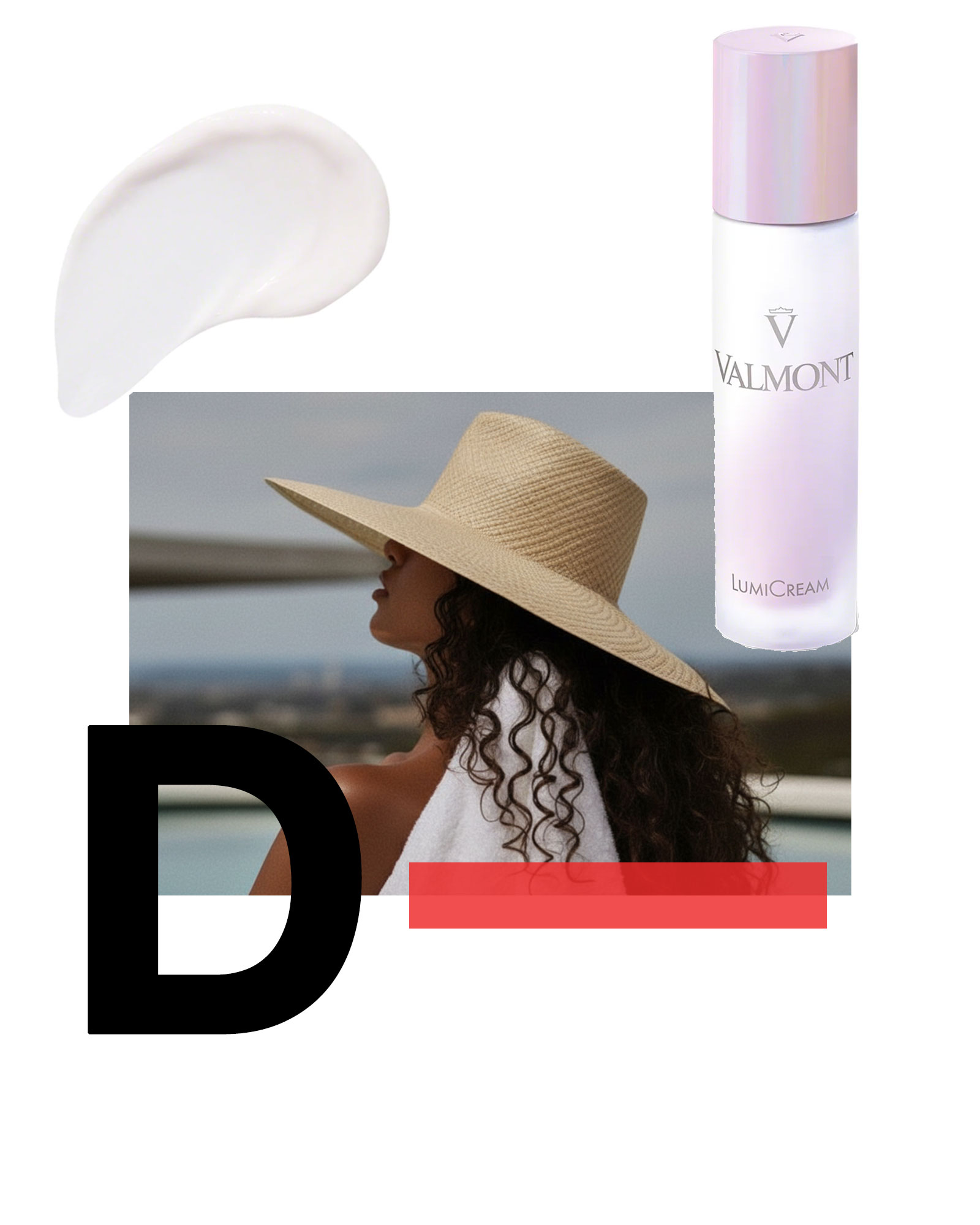
WHAT IT DOES:
A commonly used ingredient, dimethicone is a silicon-based polymer which is added to a number of common products including primers and hair conditioners. It gives products a slippery feeling and allows them to be applied more easily.
HOW IT WORKS:
Dimethicone works to prevent water-loss by forming a hydrating barrier between the skin and the product. In skin care, it is praised for its ability to seal in moisture, leaving a dewy, youthful finish on the skin.
MG SAYS:
Dimethicone is one of the most popularly used ingredients in the skin care industry. This silicone smooths the skin and hair, most commonly employed in conditioners, moisturisers and in makeup to give a luxurious texture, slip and silky finish.
WHAT IT DOES:
DMAE, or dimethylaminoethanol, is common in anti-ageing products and offers free radical protection which in turn promotes a firmer, brighter complexion.
HOW IT WORKS:
DMAE has both anti-inflammatory and antioxidant properties which assist in free radical protection, reducing the appearance of lines and resulting in firmer skin.
MG SAYS:
This hard-working ingredient is a must for anyone seeking the appearance of a firmer, lifted complexion.
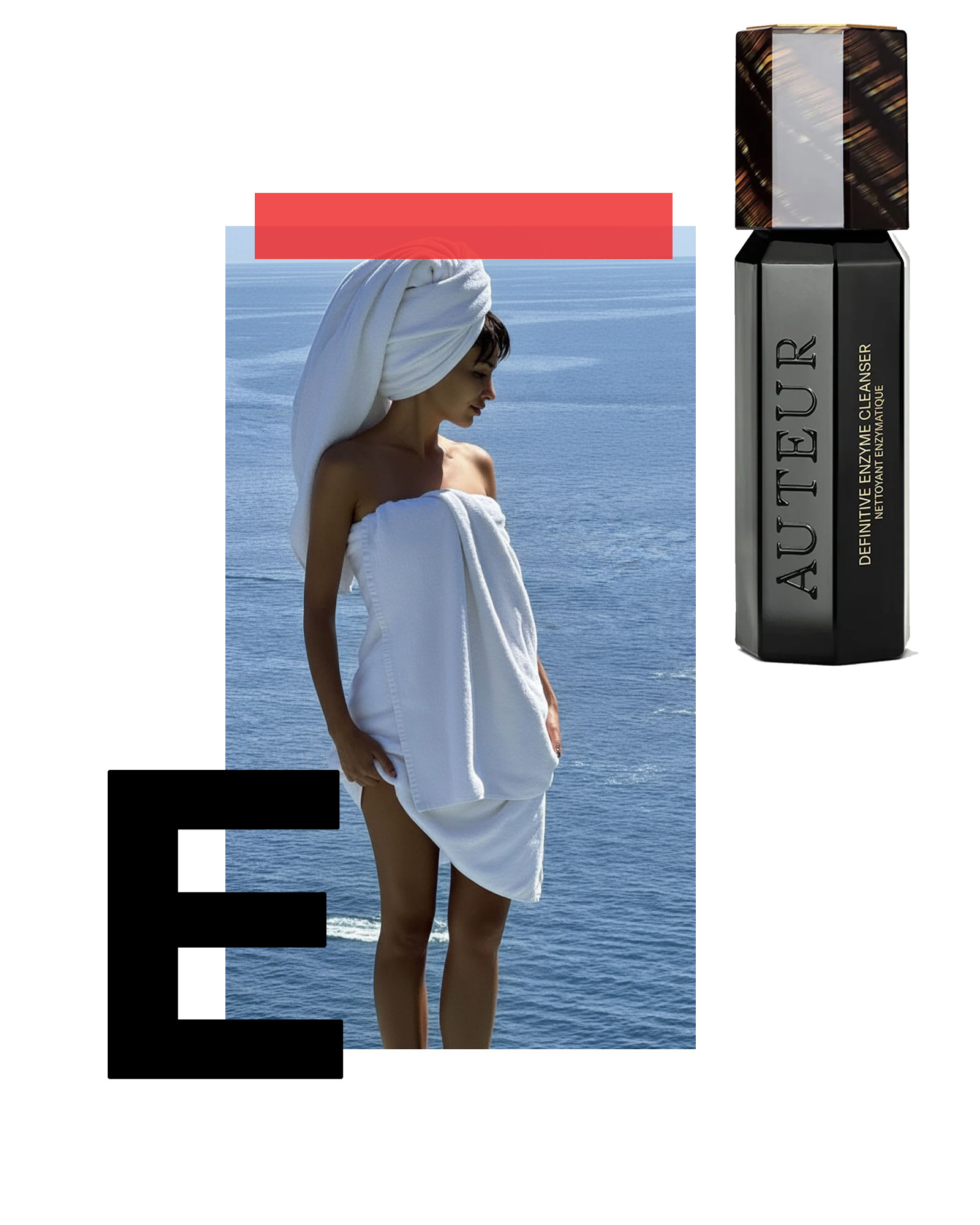
WHAT IT DOES:
EGFs, or epidermal growth factors can be sourced from plants and yeast, but the best source is from humans. EGFs stimulate the proliferation of epidermal cells, resulting in wonderful wound-healing properties.
HOW IT WORKS:
EGFs are present in many serums, boosters, masks and creams and their use has revolutionised skincare over the past 30 years. EGFs play an essential role in wound healing through stimulating epidermal and dermal regeneration, which can lead the skin to looking younger, healthier and more supple.
MG SAYS:
EGFs are effective in the treatment of wounds as well as cellular degradation seen in severely sun damaged and aged complexions. They are incredibly helpful in stimulating cellular renewal and collagen synthesis resulting in a healthier, stronger and firmer overall skin.
WHAT IT DOES:
Emulsifying waxes are essential in delivering moisture, and are used in a number of common products to help combat dryness.
HOW IT WORKS:
Consisting of molecules with one water-loving (hydrophilic) and one oil-loving (hydrophobic) end, an emulsifying wax makes it possible for an oil and water product not to separate, thus creating a smooth emulsion.
MG SAYS:
Emulsifying waxes are employed to ensure that our skin receives both adequate water and adequate lipids which in union provide optimal hydration to the complexion. More commonly employed in products targeted to a dry or normal to dry skin type, their fine consistency makes for a creamy consistency and smooth, silky finish in balms, lotions and masks.
WHAT THEY DO:
Enzymes have become an essential part of modern skincare, and are one of the most dynamic ingredients. They help support our natural processes and speed up cell turnover thanks to gentle exfoliation. When used regularly, enzymes can brighten, firm and hydrate while also gently buffing the skin.
HOW IT WORKS:
Usually derived from fruits — including pineapple, papaya and pumpkin — enzymes added in via skincare products can help boost our own natural enzyme production. They can break down dead skin and polish, buff and smooth the skin.
MG SAYS:
Enzymatic exfoliation is the gentlest form of exfoliation, making it ideal for more sensitive skin types. There is no risk of over exfoliation.
WHAT IT DOES:
Ethanol is a key ingredient in many products thanks to its preservation qualities. Either naturally produced or synthetically added, ethanol helps keep products in-date for longer.
HOW IT WORKS:
Ethanol, or alcohol, helps keep bacteria at bay in solvent lotions or formulations. Products with ethanol won’t need preservatives as the ethanol will help preserve the ingredients and shield from contamination.
MG SAYS:
Ethanol not only works as a preservative to extend the shelf life of your products and ward off bacteria and fungi, but also makes your creams and lotions have a lighter finish. Used in moderation they can assist in the absorption of more active ingredients, though excess use can lead to skin tightness or dryness.
WHAT IT DOES:
With powerful anti-acne properties, eucalyptus oil is a wonderful ingredient to help discourage blemishes. Sourced from the leaves of Australia’s own eucalyptus trees, eucalyptus oil can help clear congested skin.
HOW IT WORKS:
Eucalyptus oil has antiseptic and antifungal properties, which stops bacteria at the source and allows skin to become clear and clarified.
MG SAYS:
The aromatic oil derived from the eucalyptus tree is also known for its distinctive, uplifting scent. As an Australian, I know all about the benefits of our wonderful eucalyptus oil!
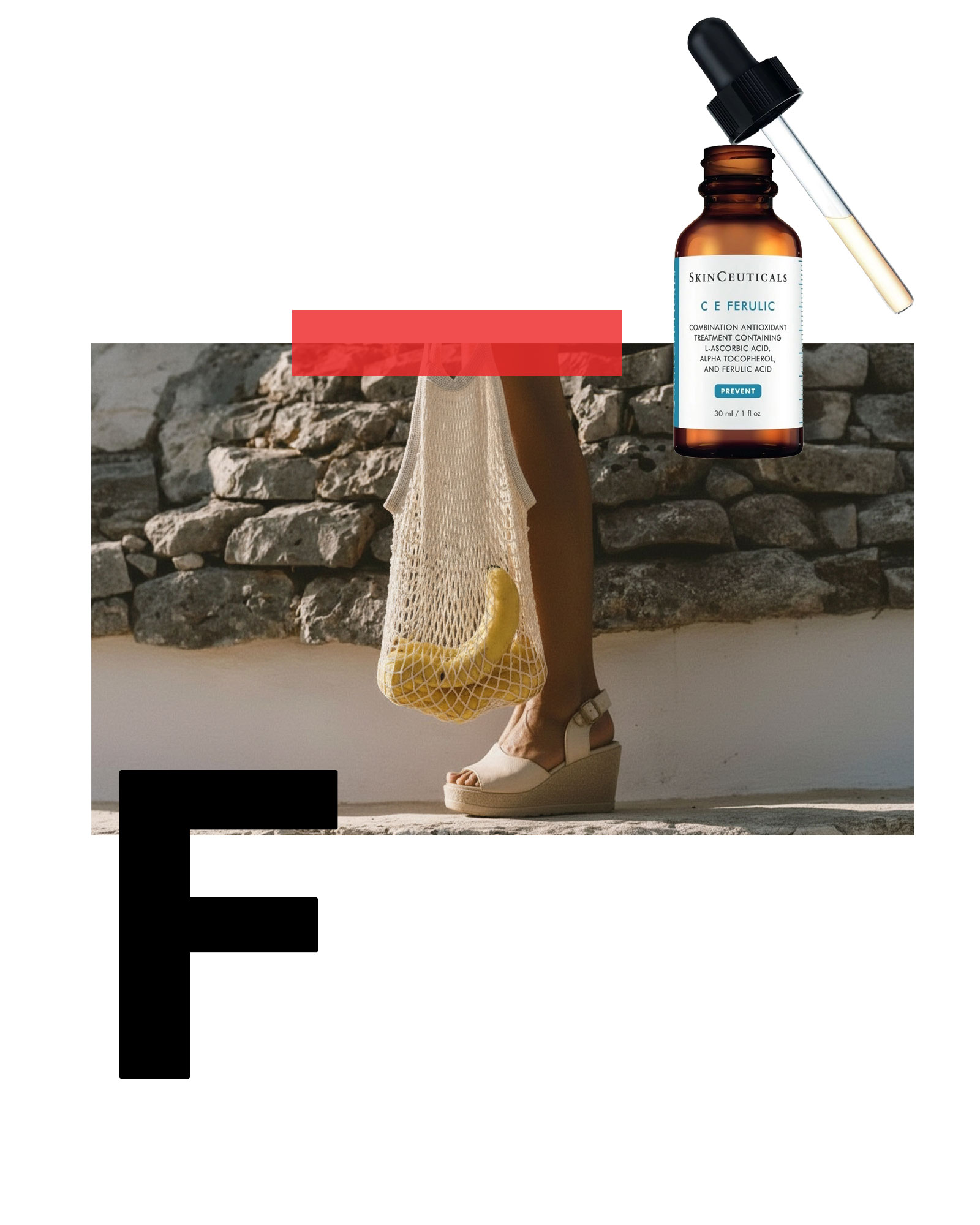
WHAT IT DOES:
One of the most effective ingredients for anti-ageing, ferulic acid is an all-rounder worthy of your top shelf. When combined with other ingredients, most notably Vitamins C and E and retinol, it helps stabilise and get the most out of free radical-fighting benefits.
HOW IT WORKS:
Helping to stabilise Vitamins C and E by preventing oxidation, ferulic acid supercharges the effects of such vitamins for seriously impressive results. In turn, the look and feel of the skin is improved and benefits include the reduction of pigmentation, the promotion of collagen production and an improvement in the laxity of the skin.
MG SAYS:
Ferulic acid can be used in conjunction with retinol. This combination allows both ingredients to easily sink into the skin, giving visible results faster and reducing the skin’s sensitivity to the sun — normally a result of using retinol based products.
WHAT IT DOES:
Fullersomes are an encapsulating agent that will extend the life of antioxidants such as Vitamin C.
HOW IT WORKS:
These molecules are a million times smaller than liposomes, ensuring incredible product penetration, which allow other ingredients to really do their jobs. Allowing everything from acids to enzymes to become absorbed more deeply into the skin, fullersomes are becoming more and more popular in high-tech skincare formulations.
MG SAYS:
Nanotechnology has taken off in the skincare industry, with ingredients like fullersomes sitting front and centre. These tiny molecules work to ensure that active ingredients are absorbed further into the skin than was ever possible before.
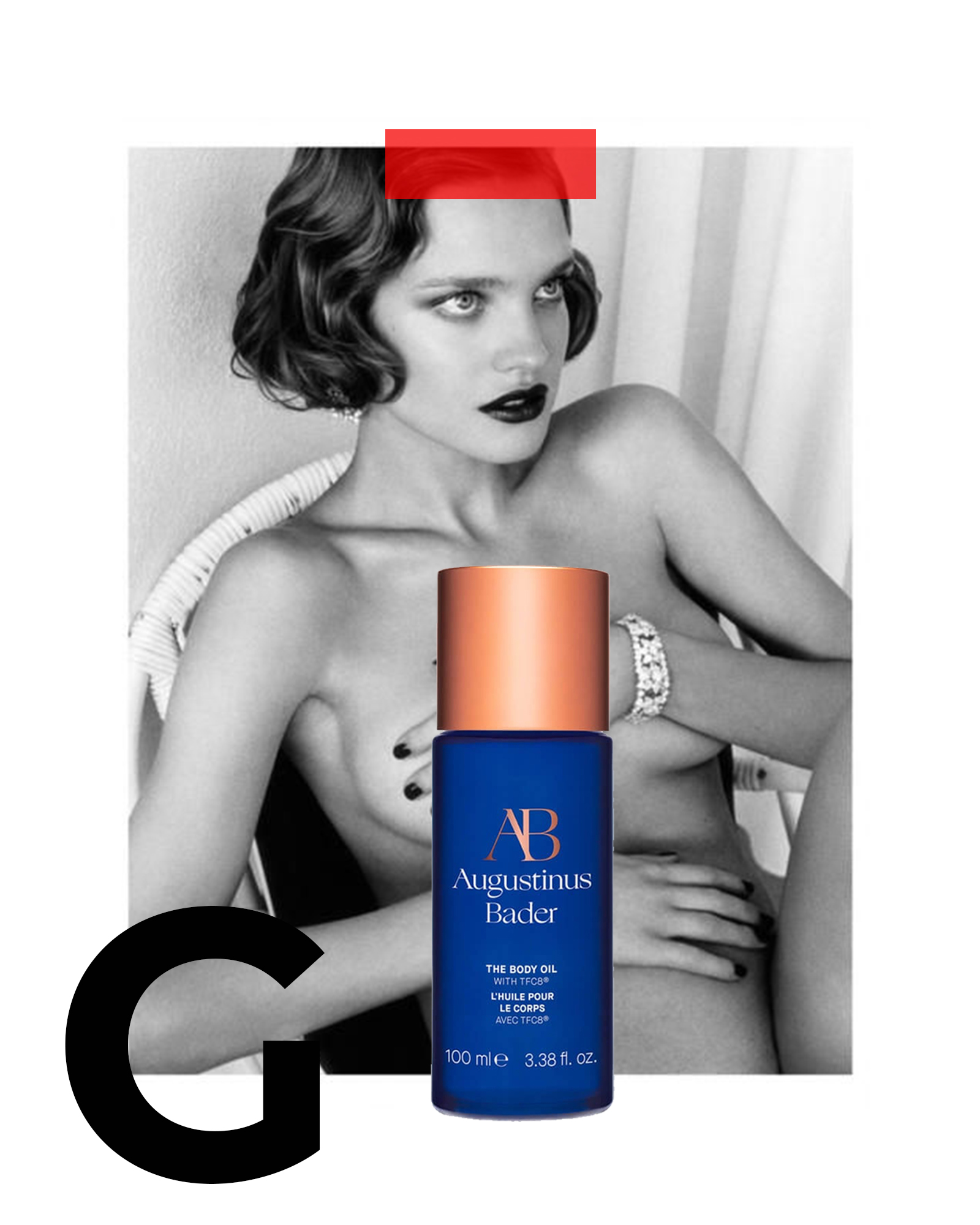
WHAT IT DOES:
Super high in vitamins, ginseng uses powerful antioxidant properties to revitalise the skin. It is often found in creams or serums, and helps reduce the appearance of fine lines and dark spots.
HOW IT WORKS:
With a focus on the production of collagen and circulation, the vitamins in ginseng help revitalise skin cells, in turn resulting in glowing, healthy skin.
MG SAYS:
Ginseng has been used in traditional Chinese medicine for thousands of years as it is thought to promote a longer life. It can certainly promote more youthful looking skin by protecting it from ageing free radicals and encouraging the production of collagen.
WHAT IT DOES:
Glucuronic acid is used as a building block for hyaluronic acid belonging to a family called “PHAs” or Polyhydroxy Acids.
HOW IT WORKS:
PHAs work in similar way to AHAs in that they are hydrating and make for a more efficacious product absorption, though are far gentler on the complexion than AHAs. For this reason, PHAs are best suited to sensitive, dry or damaged skin, and will help gently buff away the surface of the skin to deliver a small amount of exfoliation.
MG SAYS:
Glucuronic acid can be used as the hero ingredient in a product, celebrated for its conditioning and nourishing properties. It can also be used as a facilitator or carrier for other active ingredients to penetrate further into the skin in the most gentle way possible.
WHAT IT DOES:
Glycerin is an incredibly powerful moisturising ingredient. As a humectant, it prevents dryness and scaliness by protecting and reinforcing the skin’s protective barrier as moisture is drawn into the upper layer of skin. Glycerin’s powerful moisturising properties mean it’s often used as an ingredient for treating chronic skin conditions such as psoriasis and dermatitis.
HOW IT WORKS:
Syrupy in texture and colour-free, glycerin is a skin-repairing substance found naturally in the skin— one of many that help maintain the outer barrier, and by doing so, assist in preventing the appearance of dryness or scaling. Combined with other emollients or oils, it’s a fundamental ingredient in most moisturisers.
MG SAYS:
The use of glycerin in skin care formulations provides a smooth texture and works as a humectant to draw moisture from the air and help deliver active ingredients.
WHAT IT DOES:
Glycine is derived from soybean amino acids, and is rich in Vitamin E, as well as some specialised proteins and minerals.
HOW IT WORKS:
Glycine firms, smoothes and is also an antioxidant, helping to inhibit UVB ray-induced skin erythema. It is wonderful for strengthening the skin and promoting cell healing.
MG SAYS:
Glycine is an amino acid that assists in the thickening and strengthening of the skin. This molecule is essential in building proteins in the skin and, when applied topically, assists in rebuilding tissue essential in the wound healing process. This is also heightened by its high levels of Vitamin E.
WHAT IT DOES:
Glycolic acid is one of the most popular AHAs, gently buffing at the skin to reveal smooth, soft and radiant skin.
HOW IT WORKS:
Glycolic acid is a powerhouse ingredient suited to a number of different skin concerns. It is able to treat everything from acne to fine lines, as it breaks down dead skin cells to promote cell turnover. In turn, both blemishes and lines are targeted. Glycolic acid can also stimulate the production of hyaluronic acid, one of skincare's most impressive hydrators. Glycolic acid’s versatile makeup means it can be used in everything from a simple cleanser to a complex serum or everyday night cream.
MG SAYS:
Glycolic acid has the smallest molecular structure of the AHAs making it the best for rapid or intense exfoliation. However, as it is deactivated by water, you have the power to control the intensity of the exfoliation. For a gentler exfoliation, add a little water to your glycolic acid cleanser, scrub or mask.
WHAT IT DOES:
Licorice root extract is championed for its extraordinary calming and soothing properties. It functions as an antioxidant and also as a tyrosinase inhibitor, which allows it to act as a brightening agent while rectifying uneven skin tone. Brightening properties aside, it is commonly found in skincare products that nourish dry or damaged skin by reducing flaking and hydrating.
HOW IT WORKS:
Licorice root contains a compound called glycyrrhizin that offers potent anti-inflammatory benefits to the skin by mimicking an all-natural “steroid-like” effect. This makes it a wonderful, naturally-derived treatment option for those struggling with reactive conditions like eczema and dermatitis. Licorice is also unique in that it naturally contains both blabridin and liquiritin, the former of which inhibits the production of melanin in the skin and the latter which disperses existing pigment.
MG SAYS:
Licorice root extract is beneficial in treating a multitude of skin concerns from sensitivity to pigmentation and excess sebum production. It is particularly effective during periods of hormonal upheaval, such as pregnancy when the skin is more susceptible to the development of irregular pigment and where the employment of synthetic tyrosinase inhibitors are not necessarily desired.
WHAT IT DOES:
Grape seed oil is rich in fatty acids, plus linoleic acid and a host of hardworking vitamins. This allows it to help plump, hydrate and clarify the skin.
HOW IT WORKS:
As grape seed oil is rich in antioxidants, it can be a powerful ingredient in combating free radical damage, especially damage caused by the sun. Thanks to the linoleic acid, grape seed oil also hydrates and soothes, and Vitamins C and E help nourish, smooth and protect.
MG SAYS:
This replenishing oil is easily absorbed by the body and can be used for reducing the appearance of age spots, as well as wrinkles and stretch marks.
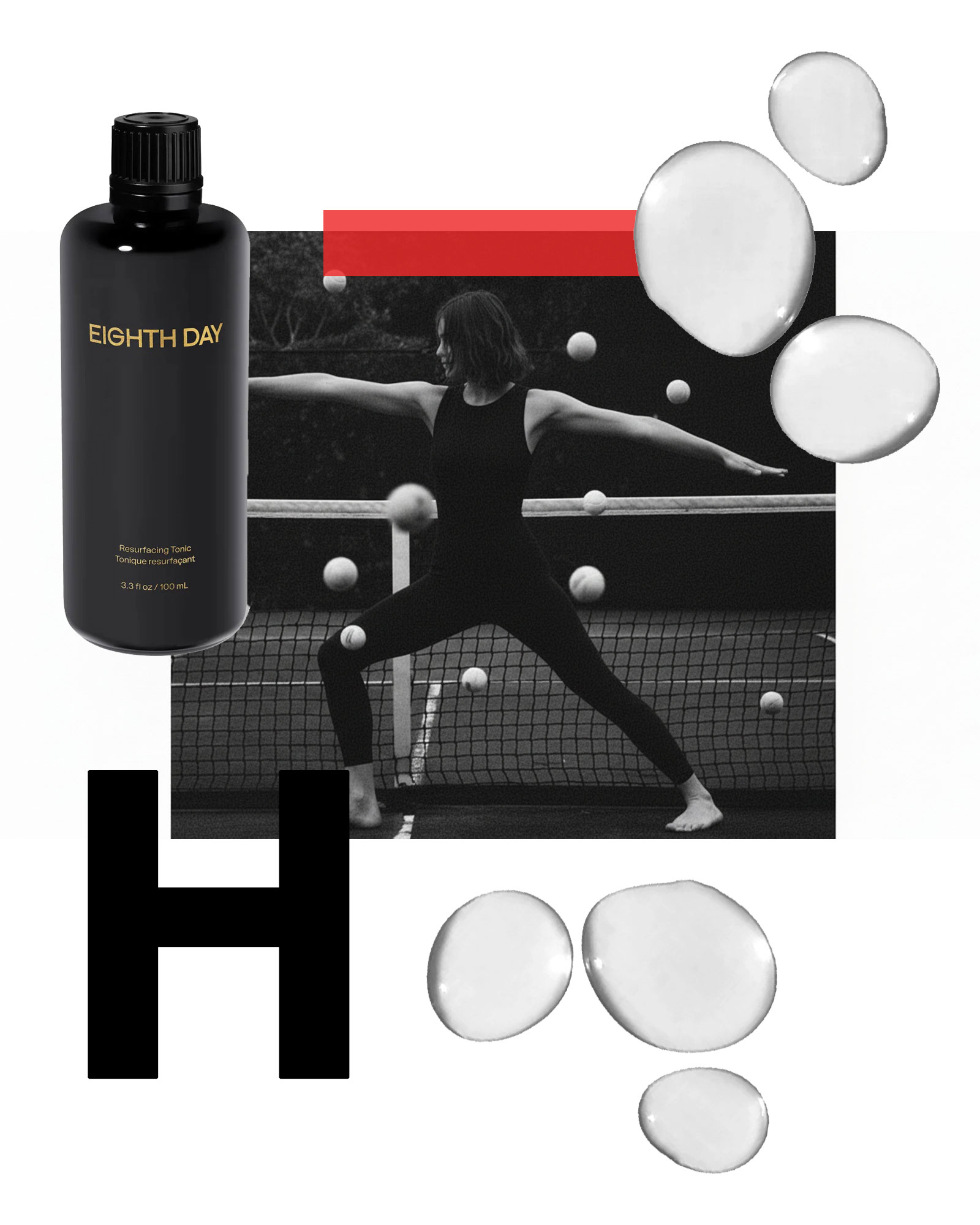
WHAT IT DOES:
Hamamelis Virginiana, more commonly known as witch hazel, has been used in the treatment of burns and bites and more recently, topical skincare. With antioxidant properties, witch hazel can help soothe inflamed skin, and can also be used to absorb oil.
HOW IT WORKS:
As an astringent, witch hazel is used in a skincare context to tighten pores and mop up oil. Due to high levels of tannins, when witch hazel is applied topically it can help refine and clarify the skin, as well as soften redness and inflammation.
MG SAYS:
Most commonly known as an astringent, witch hazel can be used to reduce the appearance of pores and absorb excess oil. It is also known for its ability to seal in moisture where needed, reduce the appearance of puffiness around the eyes and supply a rich source of polyphenols and antioxidants to the skin.
WHAT IT DOES:
Honey is one of nature’s greatest gifts. With skin soothing, softening and moisturising abilities, honey can fight signs of ageing and protect against free radicals, all the while helping to keep skin looking and feeling healthy. It’s ideal for treating dryness, acne and skin irritation.
HOW IT WORKS:
Honey is packed with amino acids, peptides and vitamins, and is well known for its anti-inflammatory properties. Plus, it’s naturally (and famously) antibacterial so is perfect for blemished skin which might be prone to trapping bacteria. A humectant, honey hydrates and retains moisture in the skin, and can be used on all types of skin from the super dry right through to oily and acne-prone.
MG SAYS:
Take inspiration from the famed Egyptian Queen, Cleopatra, and bathe in milk and honey to break down dry, dead skin (with the milk) and soften new skin (with the honey). Alternatively, apply Manuka honey as a mask to nourish and calm dry, stressed or inflamed skin.
WHAT IT DOES:
Hyaluronic acid is the key to smooth, super-soft, pillowy skin. Environmental aggressors (such as UV exposure and pollution), plus free radicals and ageing can deplete hyaluronic acid levels, causing sensitivity, dullness, fine lines, uneven tone and texture. Hyaluronic acid, like collagen, diminishes as we age, so topical application is necessary.
HOW IT WORKS:
This wonderfully hydrating ingredient is a glycosaminoglycan, a molecule composed partly of sugars, and a humectant that occurs naturally within the human body as a structural component of skin. Hyaluronic acid’s ability to hold up to 1000 times its own weight in water means it can help significantly bolster hydration from within the skin, making it a very common and popular ingredient in moisturisers or serums for dry skin. Easily absorbed thanks to a gel consistency, hyaluronic acid injects a dose of immediate moisture into the skin, which can then pad out the skin’s texture and improve the overall appearance and quality.
MG SAYS:
For skin cells to make use of important nutrients, there has to be enough water available to them which is what makes hyaluronic acid such an ideal delivery system. However, as it breaks down every 24 to 48 hours, it’s important to re-apply on a regular basis to maintain optimum hydration levels and continue allowing cells to make the most of the nutrients available to them. Even better, as hyaluronic acid plumps to perfection it’s ideal for applying under makeup to create a smooth canvas.
WHAT IT DOES:
Hydrolyzed yeast protein is an important healing protein used to restore moisture deep into the skin’s barrier, without leaving any oily residue.
HOW IT WORKS:
Used in both skin and hair care, hydrolyzed yeast protein includes Beta Glucan, an antioxidant, to help moisturiser and heal the skin when applied. Usually used in the treatment of severe skin conditions like eczema and psoriasis, hydrolyzed yeast protein is best for deep level hydration.
MG SAYS:
Hydrolyzed yeast protein is incredibly beneficial in the treatment of inflammatory skin conditions such as eczema, psoriasis, acne and seborrheic skins.
WHAT IT DOES:
Hydroquinone is used as a bleaching agent and is only available with a prescription. It is very irritating to the skin and can only be used for up to three months intermittently. Suncare is essential while incorporating this as part of your regime as hydroquinone causes the skin to become more sensitive to UV.
HOW IT WORKS:
Used to treat pigmentation and other melanin-related skin conditions, hydroquinone contains phenol compounds which inhibit the growth of melanin and decrease future instances of growth occurring. The result is that pigment is lightened, and future pigment is less likely.
MG SAYS:
An incredibly harsh tyrosinase Inhibitor, hydroquinone is best used under strict guidance from a doctor or dermatologist.
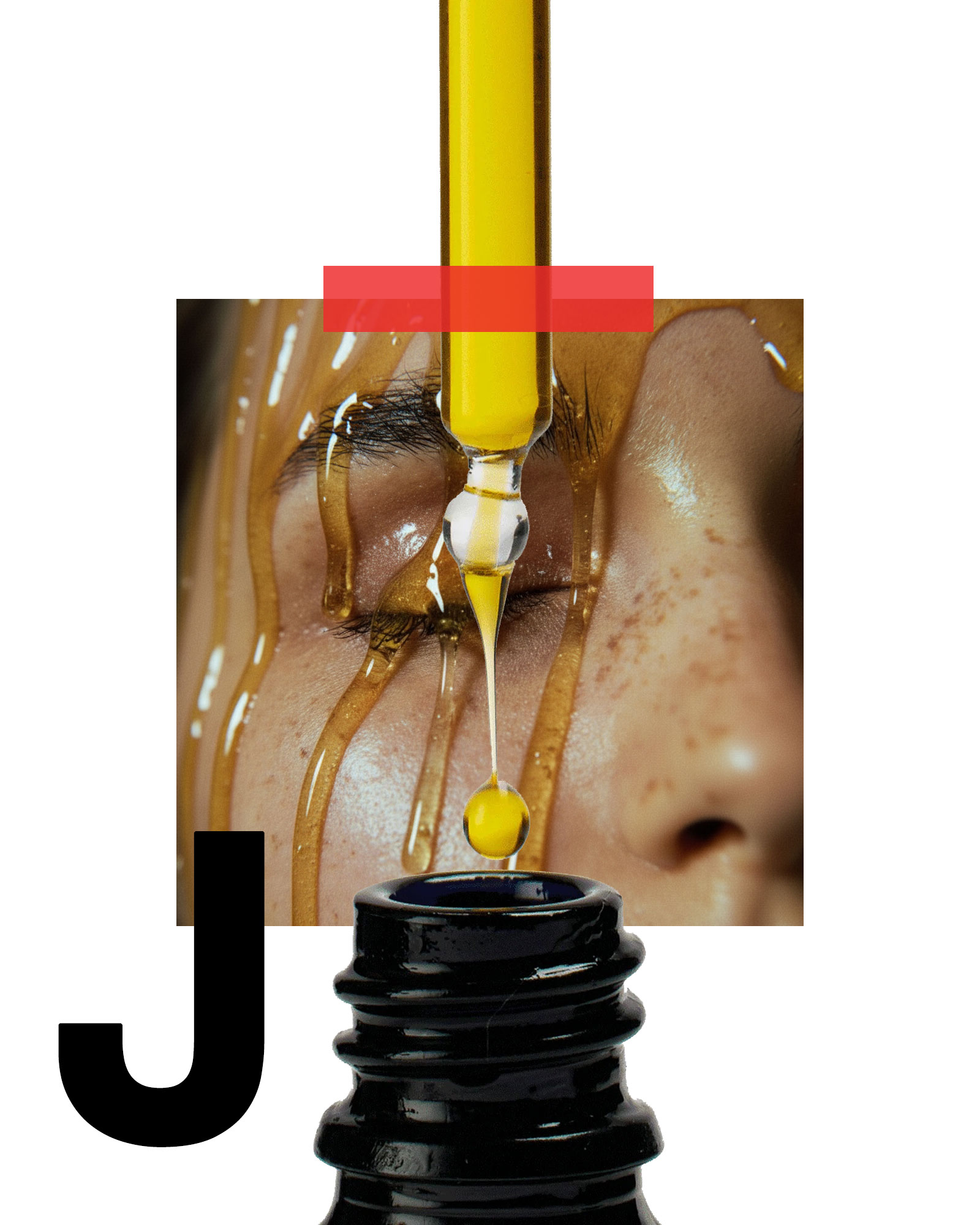
WHAT IT DOES:
Jojoba oil is a golden liquid wax extracted from the jojoba bean, and a popular ingredient in natural moisturisers. Historically, jojoba was one of the earliest forms of natural skincare and was first utilised by Native Americans. In contemporary skincare, jojoba is most commonly utilised for its ability to enhance the skin’s barrier-repair properties with the added benefit of being deeply hydrating, calming and soothing.
HOW IT WORKS:
The molecular structure of the wax esters found in jojoba are identical to the waxy substance produced by the human body to help protect the skin. It helps with barrier repair, allowing the skin to retain moisture and trap nutrients. It can also act as a carrier oil to transport other skin-saving ingredients to the pores.
MG SAYS:
This plant oil is not only extremely versatile but is also naturally antibacterial, antiviral, antifungal, analgesic, anti-inflammatory and hypoallergenic. With a molecular structure almost identical to that of the sebum produced by human skin, jojoba oil is extremely skin-compatible and is often used as a lightweight carrier oil.

WHAT IT DOES:
One of the most popular types of clay mask, kaolin allows for deep cleansing and purification, drawing out impurities from the skin, including excess oil. It’s great for acne-prone skin, and can detoxify pollutants from pores.
HOW IT WORKS:
Working especially effectively on congested or oily skin via a mask form, kaolin clay draws excess water, oil or toxins from the skin by acting essentially like a magnet, bringing to the surface any unnecessary compounds, leaving the skin clean, clear and matte.
MG SAYS:
Kaolin is often included in detoxifying and clarifying masks. It is best not to let kaolin completely dry on the complexion, so if you are using a mask, mist it frequently so the mask activates as needed.
WHAT IT DOES:
Kojic acid is derived from mushrooms, usually found in depigmenting and lightening products to improve discoloration and pigmentation on the surface of our skin. It penetrates the deeper levels of the skin barrier and inhibits how melanin forms in our skin. Kojic acid can also improve skin tone by assisting in the exfoliation of dead skin cells, leading to faster cell growth.
HOW IT WORKS:
As a chemical exfoliant, kojic acid works double duty, both exfoliating to slough away dead skin cells and also to inhibit the production of melanocytes in the skin. This makes it great for reducing pigmentation while also exfoliating to prevent further damage.
MG SAYS:
Kojic acid is a relatively mild skin-lightening ingredient used in the maintenance of tonal irregularities experienced with melasma, chloasma, hyperpigmentation and sun damage. It is best used in the evenings due to its exfoliating properties, and should be followed with sunscreen in the morning.
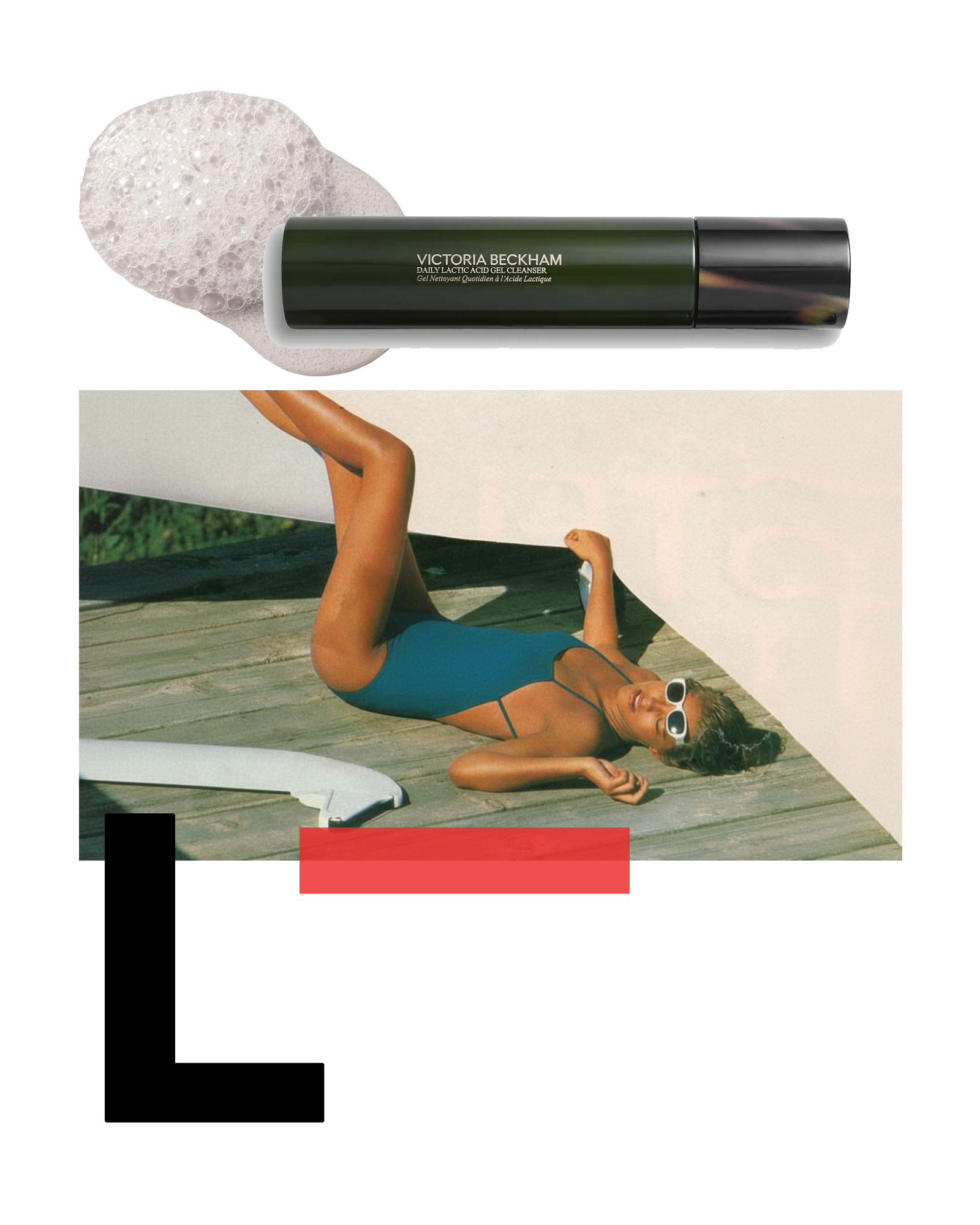
WHAT IT DOES:
Lactic acid is an AHA derived from milk that is both a chemical exfoliant and a moisturiser. The acid helps to brighten skin, reduce the look of wrinkles and improve skin texture by promoting skin cell renewal.
HOW IT WORKS:
A nifty ingredient that can do it all, lactic acid is a favourite for many skin experts due to its versatile nature. Extremely gentle thanks to a large molecular structure, lactic acid works to break down dead skin cells to reveal glowing, healthier skin. Thanks to its humectant abilities, lactic acid makes sure the skin stays hydrated and not stripped, as can be the case with some AHAs.
MG SAYS:
Lactic acid is the most gentle of all the AHA’s, making it an ideal exfoliator for sensitive skin. You can use this in higher concentrations with almost no risk of over-exfoliating. I love using lactic acid in my studios as it works for almost all skin types and conditions.
WHAT IT DOES:
L glutathione is one of the most powerful antioxidants used by the human body, found in almost every cell. It is also employed as a whitening agent, helping combat pigmentation.
HOW IT WORKS:
A tripeptide, L glutathione is formed by three amino acids. In turn, these acids bind to tyrosinase, a pigment-producing amino acid which can lead to dark spots or uneven skin tone. L glutathione helps to inhibit the production of tyrosinase, therefore leading to reduced pigment released by the call.
MG SAYS:
One of the most effective tyrosinase inhibitors on the market, L glutathione works to gradually soften existing pigment and prevents the development of future pigment with frequent use.
WHAT IT DOES:
L sodium hyaluronate is one of the many variants of hyaluronic acid, adored for its intensely hydrating and humectant properties.
HOW IT WORKS:
Often compared to hyaluronic acid, L sodium hyaluronate does have some similarities in its benefits. However, L sodium hyaluronate has a lower molecular weight, meaning it is slightly less effective at holding water but it can penetrate the skin deeper. It is also more stable, making it a popular ingredient for products with a longer shelf life. It is an effective moisturiser and can help hydrate the skin at a deep level.
MG SAYS:
This naturally occurring molecule in our skin is essential for maintaining optimal water levels in our epidermis that in turn leave our skin looking plump, youthful and radiant. It is suitable for all skin types and can be layered effectively with other active ingredients both morning and evening.
WHAT IT DOES:
A popular ingredient for oil-rich balms and protectants, lanolin provides deep moisture to the skin. It is derived from wool and is a popular emollient, combating dryness and locking in moisture.
HOW IT WORKS:
Thanks to its semi-occlusive barrier, lanolin helps prevent water loss and lock in hydration when applied topically. It helps promote softer, smoother skin and has a similar molecular structure of the human sebum, meaning it’s great for sensitive skin or those suffering from extremely dry skin.
MG SAYS:
Use of lanolin to hydrate was discovered, so they say, by sheep-shearing shepherds whose hands were remarkably soft and well-conditioned. Since then, the powerful skin-smoothing properties have been harnessed in skin care preparations.
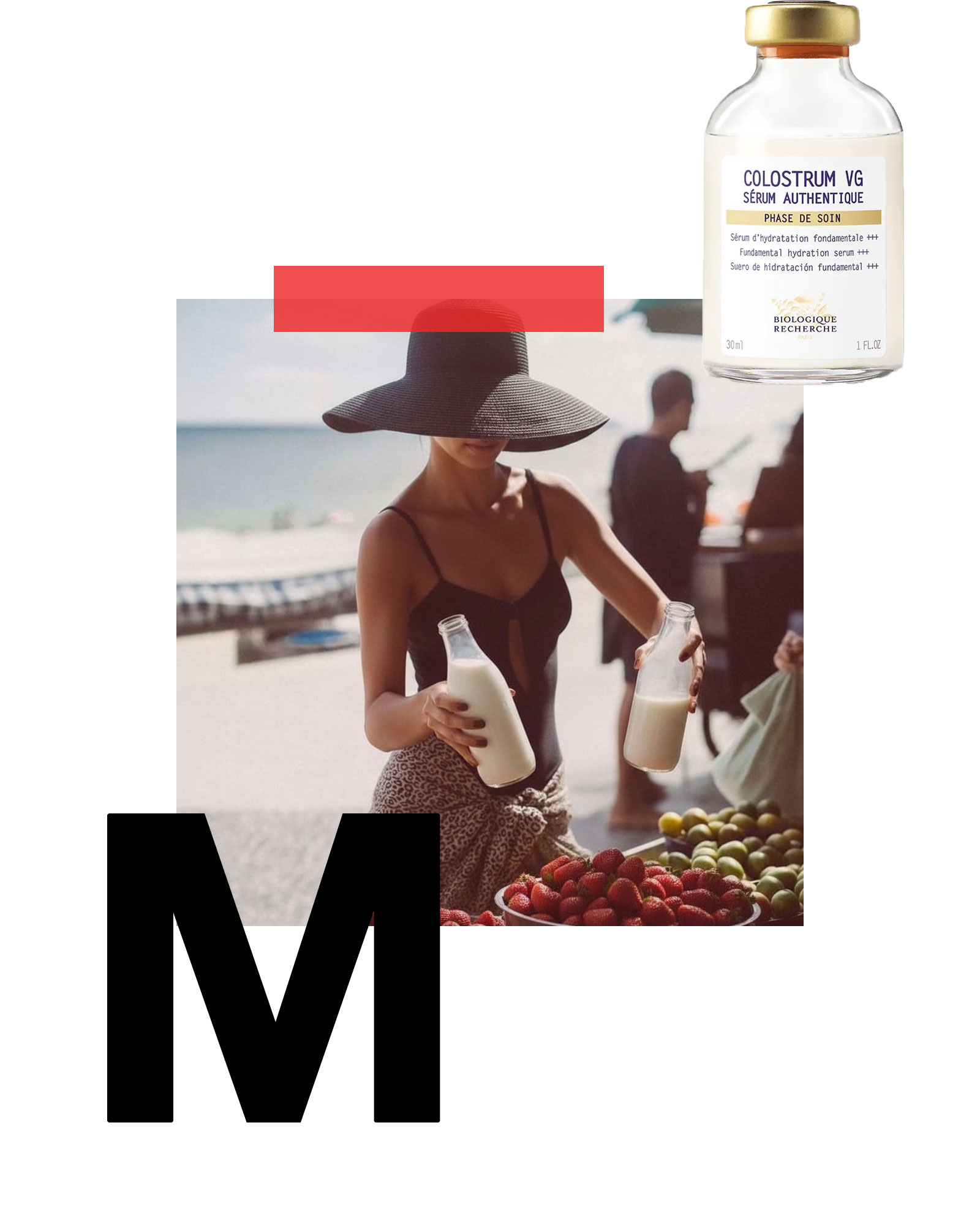
WHAT IT DOES:
One of the strongest AHAs, mandelic acid is often used to treat those with oily skin or who suffer from acne. Sometimes it is used as an alternative to salicylic acid as it is less irritating, but has a similar effect on blemishes and oil production.
HOW IT WORKS:
While mandelic acid is an AHA, it is said to behave more like a BHA, getting deeper into the cell and leaving a more lasting impact on sebum production. A truly effective exfoliator, mandelic acid is best used by those with excess oil, and avoided with those who suffer from dry skin.
MG SAYS:
Mandelic acid is derived from bitter almonds. It is an effective exfoliating medium for oilier, sensitive skin types and those with all skin shades. It can be used to clarify and refine the complexion as well as in treating minor cases of melasma and chloasma.
WHAT IT DOES:
Marula oil is extracted from the kernels of the marula fruit and is a super lightweight, antioxidant-rich oil that offers an array of complexion benefits.
HOW IT WORKS:
Marula oil is composed of oleic acid, linoleic acid, procyanidin, catechins and flavonoids, which leave skin supple, soft and radiant. Marula oil is anti-inflammatory and rich in vitamins, antioxidants and amino acids which can help restore moisture and balance redness or irritation.
MG SAYS:
The impressive antioxidant composition of marula oil is partly attributed to the fact that it grows wild in the untouched, nutrient-rich soil of northern South Africa. The marula tree is so highly regarded that it is protected in South Africa by strict policies that ensure sustainable harvesting and environmental responsibility.
WHAT IT DOES:
Melissa Officinalis is celebrated for its antibacterial and antioxidant properties. It is also commonly used as a brightening ingredient.
HOW IT WORKS:
Melissa Officinalis contains caffeic acid and ferulic acid, both widely famed antioxidants known to prevent cellular degradation caused by sun exposure, pollution and environmental aggressors. In addition, it also boasts high levels of flavonoids which strengthen blood vessels and stabilise elastin and collagen in the skin.
MG SAYS:
Melissa Officinalis is commonly known as lemon balm and has been used for thousands of years in natural skin care remedies. In modern times, pure lemon balm oil is one of the most expensive skin care ingredients on the natural market.
WHAT IT DOES:
Most commonly found in micellar water for make-up removal, micelles are gentle on the skin while providing a thorough cleanse. They don’t strip the skin and leave it feeling supple and hydrated.
HOW IT WORKS:
Micellar water is made by combining electrically charged oil molecules which sit within water. When used on skin, the micelles grip onto make-up, dirt or other impurities and break them free, cleansing the face. There’s no residue left on the skin and the light texture ensures the pores remain clean and unclogged.
MG SAYS:
The first micellar waters were fashioned in France over 100 years ago to rescue delicate Parisian skin from the region’s infamously harsh water supply. They remain a staple in the French beauty regime and their ability to remove makeup, cleanse and soften in one simple, no-rinse step make them a must-have, especially for dry and sensitive skin.
WHAT IT DOES:
Milk proteins are great for sensitive skin and provide non-irritating hydration to dry skin. Derived from dairy, milk proteins are super nourishing.
HOW IT WORKS:
Milk proteins can hold an impressive amount of water, which in turn allows the skin to add hydration and moisture when applied topically. The end result is smoother skin and better texture.
MG SAYS:
Whether it's a dry face or body, skin in need of gentle and nutritive effects can benefit from milk protein. Like all proteins, they’re non-irritating, making it an excellent option for those with particularly dry or sensitive skin.
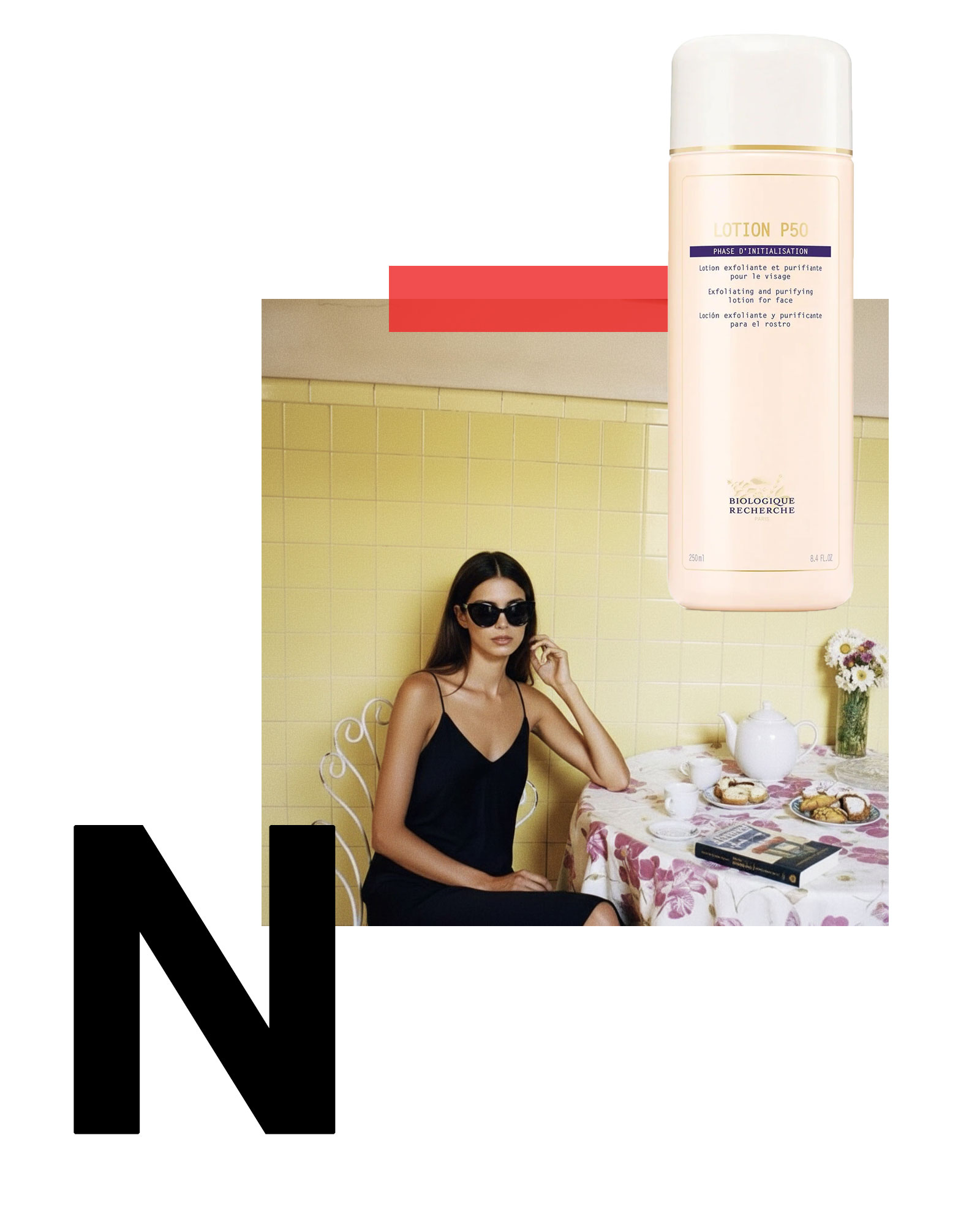
WHAT IT DOES:
Niacinamide is a formidable ingredient from the Vitamin B family, lauded for its ability to interact with cells and stimulate microcirculation, improving skin tone, texture and laxity. Niacinamide is used to tackle a legion of skin concerns, including hyperpigmentation, inflammation, reduced skin elasticity and redness.
HOW IT WORKS:
Niacinamide increases levels of fatty acid within the skin and is the perfect antidote for maturing skin. It brightens the complexion and reduces water loss while balancing excess oil and strengthening the acid mantle to protect from common irritants such as pollution. Niacinamide encourages the skin to mimic newer, healthier cells, and boosts the synthesis of other essential molecules within the skin, which in turn makes the skin look younger and more vibrant.
MG SAYS:
Whether you’re concerned about the look of dryness, pigmentation, sun damage, acne or the signs of skin ageing, niacinamide can help. Pair with a broad spectrum sunscreen during the day to protect skin from the damaging effects of the sun.
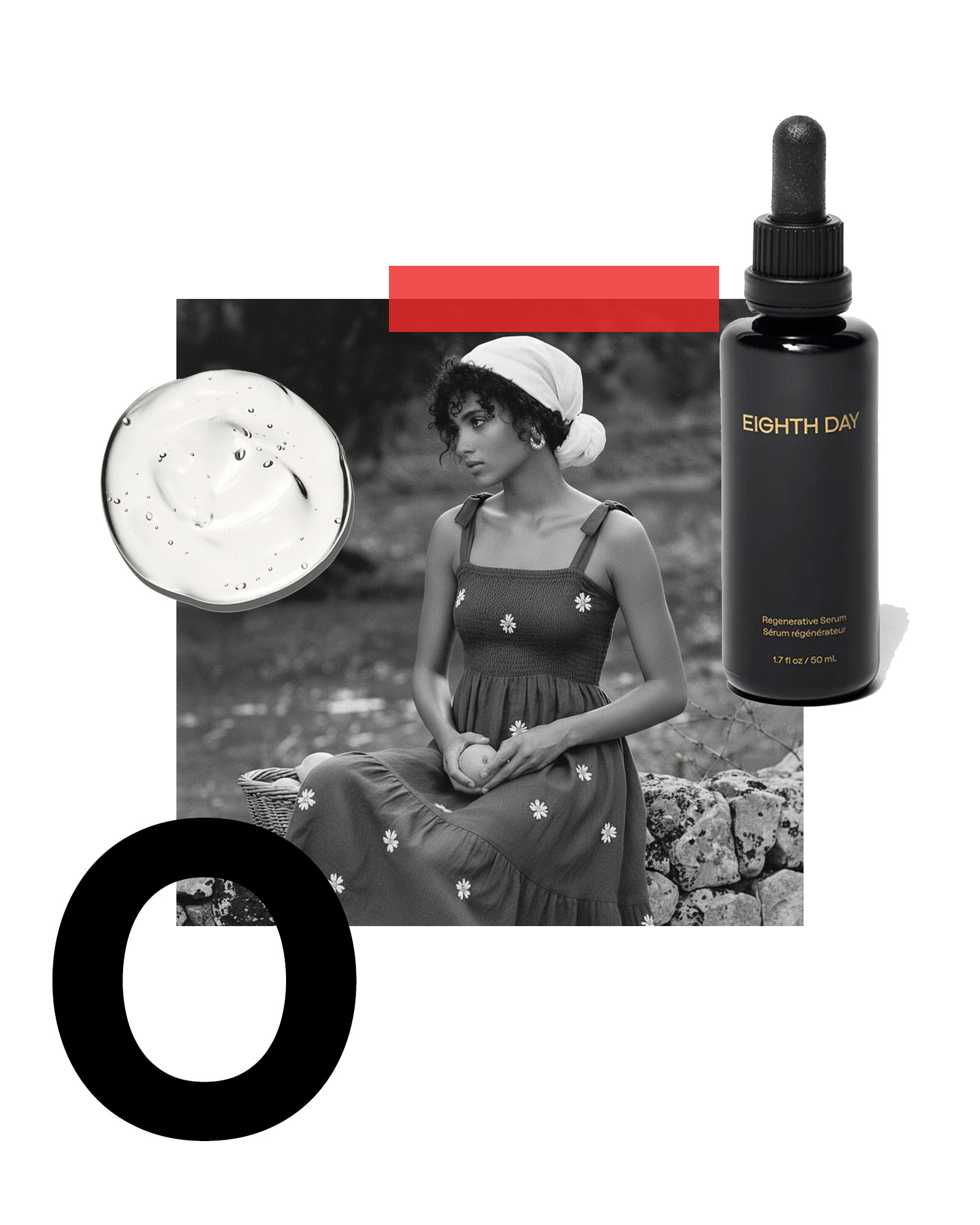
WHAT IT DOES:
Oligopeptides are peptides whereby molecules contain relatively small numbers of amino-acid residues. They are derived from cell proteins and possess specific revitalising, regenerative and protective properties and are wonderful for enhancing collagen production, an essential building block for our skin.
HOW IT WORKS:
Peptides act as dispatchers that signal skin cells to carry out their specific functions. Peptides are integral to proper skin functioning as they are required for all processes that take place within the skin cells. As such, oligopeptides are an essential component of human make-up and are naturally occurring within the human body, though they may be synthesised for inclusion in topical skincare products.
MG SAYS: The major benefit of incorporating oligopeptides into skincare is for the enhanced collagen production, a fundamental aspect of decelerating the ageing process.
WHAT IT DOES:
Omegas are essential fatty acids which help nourish and plump our skin. They can be boosted by omega-rich diets (including fatty fishes, legumes and avocados) but can also be gained via topical treatments. Depending on the type of omega, the benefits include hydration, improved laxity, reduction in redness and soothing properties.
HOW IT WORKS:
There are three types of omega fats, alpha-linolenic acid (ALA), eicosapentaenoic acid (EPA), and docosahexaenoic acid (DHA). All three are gained from different sources and provide different functions. Together, a healthy amount of omega can help strengthen the skin’s barrier and promote overall skin health.
MG SAYS:
Omegas provide essential fatty acids that the body cannot naturally produce so that the cell membrane of your skin cells remain supple, plump and resistant to damage caused by the elements. Omegas will also help reduce loss of hydration and restore a youthful glow to skin.
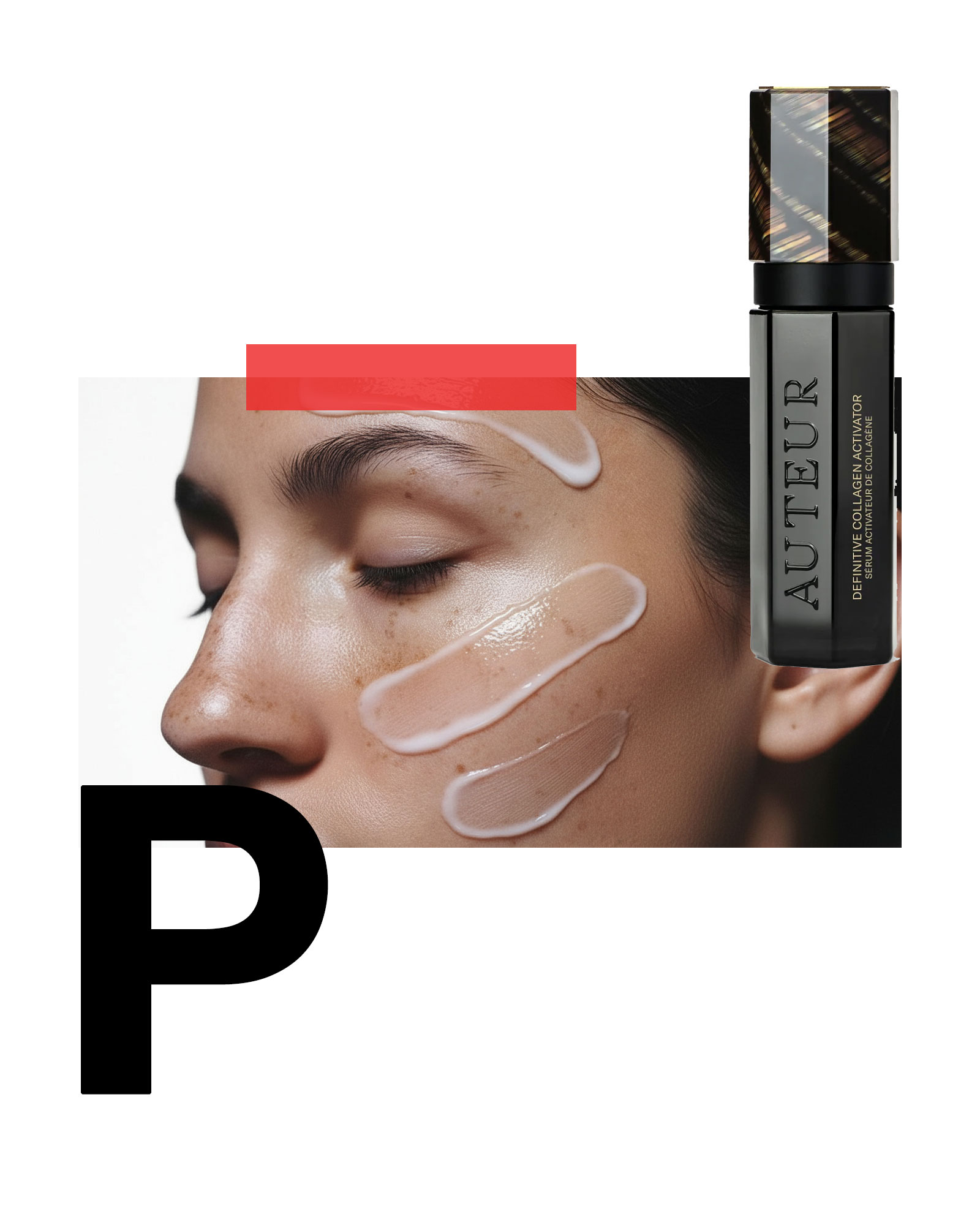
WHAT IT DOES:
Also known as Vitamin B5, panthenol is a great moisturising ingredient, and provides deep hydration which can help combat dry and dull skin.
Panthenol is a moisturiser and natural chemical compound sometimes known as pro-vitamin B5. This emollient is deeply hydrating and nourishing with anti-inflammatory protection, helping to soothe the appearance of dry skin.
HOW IT WORKS:
As an emollient, panthenol is deeply hydrating, locking in moisture and inhibiting water loss. It also has anti-inflammatory properties which can help soothe irritated, dry or red skin.
MG SAYS:
As a form of vitamin B5, panthenol acts as a hydrator that helps to retain moisture in the skin and hair. This means it will prevent the appearance of dehydration and plump from within, giving you smooth, radiant and bouncy skin. With continued use it can calm and soothe the appearance of any inflammation in the skin, too.
WHAT THEY DO:
Peptides encompass a whole range of sub ingredients, but are generally known for being skincare darlings. From restoration to anti-inflammatory properties, you name it, peptides can probably help. Most are known to promote repair at a cellular level, which can help aid in the reduction of fine lines and uneven texture.
HOW IT WORKS:
Peptides are made from chains of amino acids, the combination of which can change the purpose of the peptide. Found throughout the body, peptides communicate with the surrounding cells to deliver messages — in skincare, this could mean processes like increasing collagen production, which can be boosted by specifically-tailored peptides.
MG SAYS:
Peptides are often found in anti-ageing products thanks to their reparative power. Keep an eye out for palmitoyl oligopeptide, known for its ability to encourage collagen production and firm the skin, and palmitoyl tetrapeptide-7, attributed to lessening the inflammatory response.
WHAT IT DOES:
Phytic acid is a great exfoliant for those with sensitive skin or a lower tolerance to traditional exfoliators. Found in cereals and seeds, phytic acid is full of antioxidants to provide gentle resurfacing of the skin cells to buff away dead skin to make way for a radiant complexion.
HOW IT WORKS:
Helping to even out skin texture and treat minor blemishes, phytic acid exfoliates gently to refine the skin’s surface and tone. It can also be used to treat hyperpigmentation and conditions like melasma.
MG SAYS:
If you find other acids a little too abrasive, this might be the one for you. Due to its ability to act at a low pH without the skin, phytic acid is a perfect alternative for those prone to sensitivity.
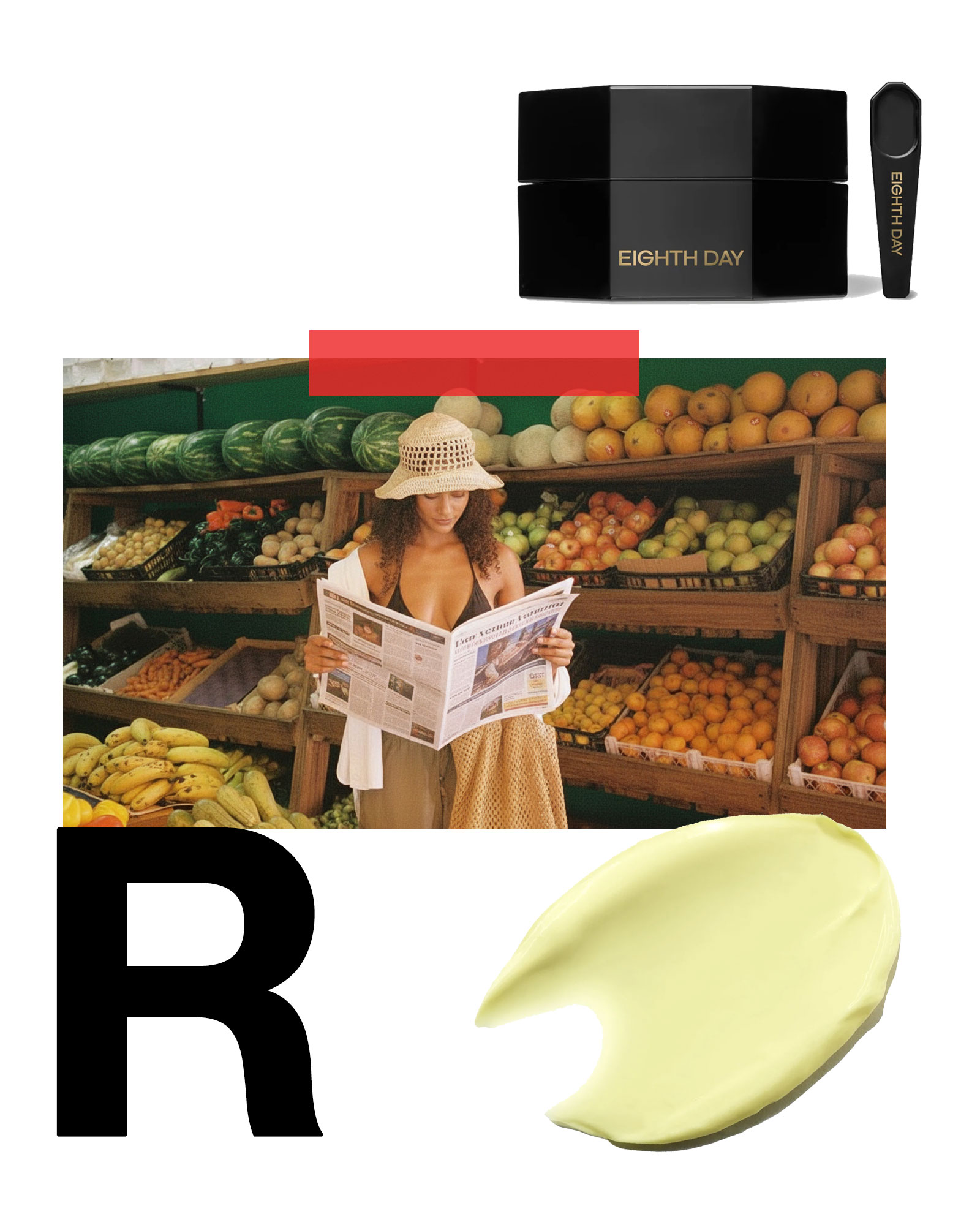
WHAT IT DOES:
This plant-derived extract is one of nature's best defenders. Resveratrol is synthesised by plants in response to stressors from environmental aggressors and when applied topically, this antimicrobial substance is proven to promote the appearance of a smooth, youthful looking complexion.
HOW IT WORKS:
A polyphenolic antioxidant, resveratrol finds free radicals and prevents the creation of new ones, a clever defence against external pollutants and sun-induced UV damage. When used regularly, resveratrol can help reduce the appearance of lines and can improve the overall laxity of the skin.
MG SAYS:
This incredible ingredient, found in a glass of red wine, is referred to as a life preserver. When administered to flies, resveratrol has been found to halt the ageing process in its tracks and extend their lifespan. Incorporate this powerful ingredient into your skin care regime as well as your diet with a glass of red wine.
WHAT IT DOES:
Skincare’s hardest worker, retinol is the queen of youthful skin. Retinol visibility improves lines, can help combat acne, and can even treat rosacea — quite the powerhouse! Best used on ageing skin, retinol is a must-use ingredient for every skincare regime from around the age of 30.
HOW IT WORKS:
As a derivative of vitamin A, retinol helps produce new, healthier cells which can then hamper the breakdown of collagen, preventing an accelerated ageing process. It thickens the skin, making it hard for lines to form, and helps regulate oil production which can in turn help stop acne. Thanks to the hastened cell turnover, scarring, blemishes and rosacea can be treated with retinol as it promotes healthy cells to grow in place. However, it’s important to be vigilant with sunscreen while using retinol, as the ingredient can make the skin more sensitive to the sun.
MG SAYS:
Retinol really is the gold standard for anti-ageing skin care and an essential ingredient to a great regime. Use in the evening as the ingredient is unstable in sunlight.
WHAT IT DOES:
Rice is a wonderfully moisturising ingredient with many benefits. Known for enzymes which smooth and soothe the skin, as well as its ability to promote collagen production, rice has been a favourite ingredient in skincare for centuries. Rice bran is known for its skin smoothing enzymes, antioxidant properties and ability to help promote collagen production. Meanwhile, rice starch assists in forming a soothing protective film over the skin.
HOW IT WORKS:
Containing Vitamin E, linoleic acid, oleic acid and palmitic acid, rice conditions the skin as an effective moisturiser, while gently buffing for a natural exfoliant. Squalane, a popular and natural moisturiser, is found in rice bran oil, and rice starch forms a protective film over the skin, helping keep out toxins.
MG SAYS:
Legend says that Japanese women bathed in rice water to give their skin a beautiful luminosity. Whether or not this is true, it can definitely be said that rice is an excellent exfoliator that smooths the appearance of the skin, making it look brighter and more radiant.
WHAT IT DOES:
Rose oil is a beautiful moisturiser which can help reduce inflammation. Rose water, on the other hand, has cleansing properties which can also soothe at the same time. Plus, the subtle scent can be a lovely natural perfume.
HOW IT WORKS:
Roses have antiseptic and antioxidant properties which can help damaged skin to heal, and fight against new damage caused by free radicals.
MG SAYS:
Ditch the sugar for your 3pm pick-me-up and instead reach for a rosewater spray. It’s a great spritz over the face throughout the day and over makeup to keep skin feeling hydrated and refreshed.
WHAT IT DOES:
Rosehip is a Vitamin C-packed oil which provides ample hydration and nourishment to the skin. Harnessing Vitamin C’s rejuvenating effects, rosehip oil can help promote the production of collagen while plumping the appearance of the skin. It is also an effective way of adding elasticity back into the skin cells, which is why rosehip oil is commonly used to aid in stretch mark treatment.
HOW IT WORKS:
With both Vitamin C and Vitamin A, plus plenty of fatty acids, rosehip oil can nourish and protect the skin at all the same time.
MG SAYS:
All skin types can benefit from rosehip oil as it's packed with essential fatty acids, vitamins and antioxidants. It’s a healing oil that has the unique ability to deeply nourish and balance all skin types.
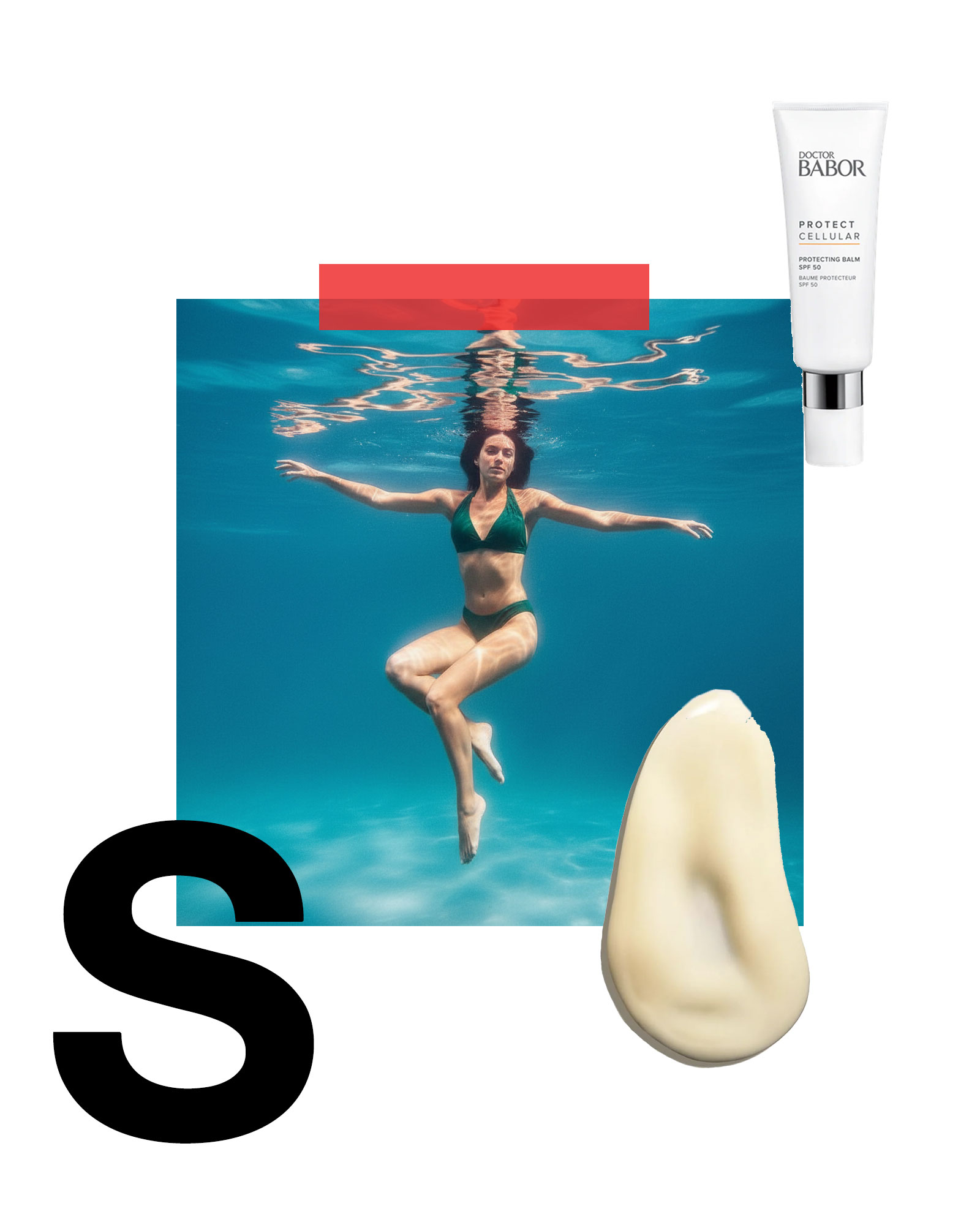
WHAT IT DOES:
A remedy for ageing skin, seaweed works to stimulate, revitalise and nourish. Able to smooth and soften skin, it is effective in improving the appearance of wrinkles and fine lines as well as treating acne. Seaweed is used in traditional Chinese medicine and Polynesian cultural practices to alleviate the symptoms of mild burns, rashes, wounds and swelling.
HOW IT WORKS:
With a high iodine and sulphur amino acid content, seaweed treats a wide variety of skin concerns. Its moisturising and wrinkle-smoothing properties come from its high silica content and ability to react with protein to form a protective gel on the skin’s surface. With antibiotic properties, seaweed can also protect against infection and reduce acne-causing bacteria.
MG SAYS:
With tens of thousands of seaweed varieties in the world, it really is a skincare superstar. In particular, the pigment astaxanthin found in algae is ideal to use for potent anti-inflammatory action and to support cell renewal. Seaweed is suitable for use on all skin types, but especially great for dry skin due to its hydrating, nourishing and conditioning properties.
WHAT IT DOES:
Selenium is one of the many essential minerals that are fundamental for achieving and maintaining optimal skin health.
HOW IT WORKS:
Selenium works as both an antioxidant and a cellular building block for ensuring the skin maintains elasticity from a cellular level. In turn, it promotes overall good skin health and the production of collagen.
MG SAYS:
Selenium is a fundamental constituent in ensuring all aspects of the skin system are functioning and optimal levels. Selenium is a potent anti-ageing ingredient as it protects from cellular degeneration and promotes collagen synthesis in the skin.
WHAT IT DOES:
Shea butter has been used for generations thanks to its rich moisturising properties and high dosage of Vitamins A, D and E, all ideal for plumping and firming the skin. Derived from the African shea nut tree, this wondrous butter is perfect for dry and damaged skin.
HOW IT WORKS:
Thanks to its emollient nature and added antioxidant benefits, shea butter is effective at restoring deep moisture and improving the overall look of dry skin.
MG SAYS:
For millennia, African people have been using this miracle butter to protect their skin and hair from the scorching sun and drying desert winds (it is said that the Egyptian Queen Nefertiti owed her legendary beauty to the use of shea). Protective and deeply moisturising, consider shea butter a superfood for the skin.
WHAT IT DOES:
Milk thistle has many remarkable effects on the skin, the most widely researched being its incredible antioxidant profile — namely, that it is 10 times more potent than Vitamin E.
HOW IT WORKS:
Milk thistle contains a constituent called silymarin, a potent antioxidant praised for its soothing and regenerative properties, which can have similar effects to Vitamin C when formulated correctly.
MG SAYS:
Milk thistle has long been used for its detoxifying properties, making it particularly useful in treating blemishes and congestion. In addition, its anti-inflammatory and healing characteristics also make it suitable for alleviating the symptoms of eczema and prove it a powerful anti-ageing ingredient.
WHAT IT DOES:
Squalane makes up around 10% of our skin’s natural sebum, oils produced by the sebaceous glands that perform a host of important functions for protecting and repairing the skin. Squalane is a skin-identical ingredient, meaning it’s already present in the human body. This is why it's so well-tolerated and well-absorbed when formulated into skincare products. Known for its incredible hydrating abilities, squalane is a powerful moisturiser and emollient, meaning it locks moisture in, prevents water loss, and keeps the skin soft and supple.
HOW IT WORKS:
As we age, our natural production of squalane slows, so applying topically is a great way to help plump and hydrate the skin. It also has antioxidant properties, which help to defend the skin against free radical damage generated from environmental factors like UV exposure and pollution.
MG SAYS:
Squalane is commonly found in serum and cream formulations in combination with other active ingredients to enhance their benefits such as algae, hyaluronic acid, retinol and Vitamin C. This ingredient can also be easily incorporated into your routine by adding a few drops of pure squalane into your moisturiser for a supercharged dose of hydration.Squalene can be used after, or with your serums, depending on your preference. If your skin is feeling particularly devitalised, or if you’ve been exposed to central heating or prolonged periods of stress, applying it in the evenings will allow it to really infuse overnight, supporting your skin’s own processes of healing and regeneration as you sleep.
WHAT IT DOES:
Sodium benzoate is a food-grade preservative found in many fruits like plums, cranberries and apples. It’s an essential ingredient in ensuring products remain stable on the shelf.
HOW IT WORKS:
Sodium benzoate prevents the development of microbials and fungus in skin care products by changing their nature. It can also prevent metal product vessels from rusting over time.
MG SAYS:
Sodium benzoate is an essential ingredient in ensuring the shelf life of a product. It should not to be used in conjunction with Vitamin C as the combination can be toxic.
WHAT IT DOES:
Sorbitol is a sugar used as a humectant in skincare to improve the skin’s ability to retain moisture. As a humectant, sorbitol draws water from the air into the skin to ensure it remains supple and adequately hydrated while preventing further moisture loss.
HOW IT WORKS:
Sorbitol keeps the skin hydrated by pulling water from the air and drawing it into the deep dermis. It is used in moisturisers and creams for its thickening and lubricating properties and can be manufactured through natural or synthetic means.
MG SAYS:
Sorbitol is useful in treating dry and devitalised skins as its ability to continually pull water from the atmosphere results in prolonged relief for the skin.
WHAT IT DOES:
Spin trap is an intelligent antioxidant that traps free radicals and converts them into harmless and useful oxygen before transporting them back into the respiratory cycle. It’s known as one of the smartest ingredients out there, and is good for treating free radical damage.
HOW IT WORKS:
Spin trap shields the complexion from degenerative and destructive molecules as well as metabolising them into those that will benefit the skin.
MG SAYS:
One of the only proactive antioxidants known to man, spin trap not only defends the complexion from pollutants and free radical damage, but succeeds in overturning these harmful molecules into beneficial, oxygenating effects on the skin.
WHAT IT DOES:
Perfect for those with delicate and dry skin, sulphur as an ingredient can treat a host of conditions. Most commonly used for blemishes and acne, sulphur can also help heal dry and itchy skin on those suffering from eczema and psoriasis.
HOW IT WORKS:
Sulphur has mild antiseptic properties which helps dissolve acne-causing bacteria, as well as encouraging cell turnover and gently exfoliating the topmost layer of the skin, buffing away debris. In turn, it helps minimise oil production and leads to clearer skin.
MG SAYS:
A great anti-blemish alternative for those who find salicylic acid or benzoyl peroxide irritating or a little too harsh. Plus, with ancient natural healing properties, itchy and irritated skin will find blissful relief when soaking in hot sulphur springs.
WHAT IT DOES:
Chemical sunscreens apply synthetic filters to stop the UV rays of the sun from penetrating into the dermis. It in turn protects the skin from harsh UV damage which can cause burning, premature ageing and skin cancers.
HOW IT WORKS:
Sunscreen’s active ingredients essentially neutralise UVA and UVB rays in their tracks, blocking them from reaching beyond the chemical barrier. Chemical sunscreens take about 20 minutes to properly absorb into the skin, and are best used in tandem with physical barriers including hats, sunglasses and protective clothing.
MG SAYS:
We all know that it’s essential to top-up your SPF protection throughout the day, however this isn’t always easy to do when wearing a full face of makeup. If you don’t wish to remove your base and start again, apply a generous dusting of mineral powder with SPF protection over the top of your makeup a few times a day. However, a full application is always the safest option.
WHAT IT DOES:
A physical sunscreen uses a physical barrier, rather than chemicals absorbed into the skin, to repel UVA and UVB rays. Like chemical sunscreens, regular application of physical sunscreen can help with fine lines, pigmentation and skin cancers which can be warded off in tandem with other sun-safe procedures such as wearing protective clothing and sunglasses.
HOW IT WORKS:
Using mineral filters which sit on top of the skin, active ingredients like titanium dioxide and zinc oxide act as a barrier to the sun. These block the sun’s rays and stop them from penetrating the skin cells. The broader the spectrum of the sunscreen, the more effective and the longer this protection will last.
MG SAYS:
Sensitive skin types fear not, physical sunscreens can be ultra-gentle. Zinc oxide, one of the most commonly used physical sunscreen ingredients, is known to be extremely anti-inflammatory and soothing.
WHAT IT DOES:
Superoxide dismutase is an enzyme that protects the mutation of free radicals in skin cells, stopping damage from the likes of pollution and other environmental aggressors.
HOW IT WORKS:
Superoxide dismutase works to shield the complexion from free radical damage and the inflammatory effects of exterior aggressors.
MG SAYS:
Superoxide dismutase is a wonderful inclusion in any regime in either mist or serum form. Especially helpful for those living in densely populated areas, who frequent long haul travel or who are exposed to extended periods of air conditioning, this protective powerhouse prevents the rapid mutation and degeneration of skin cells and DNA.
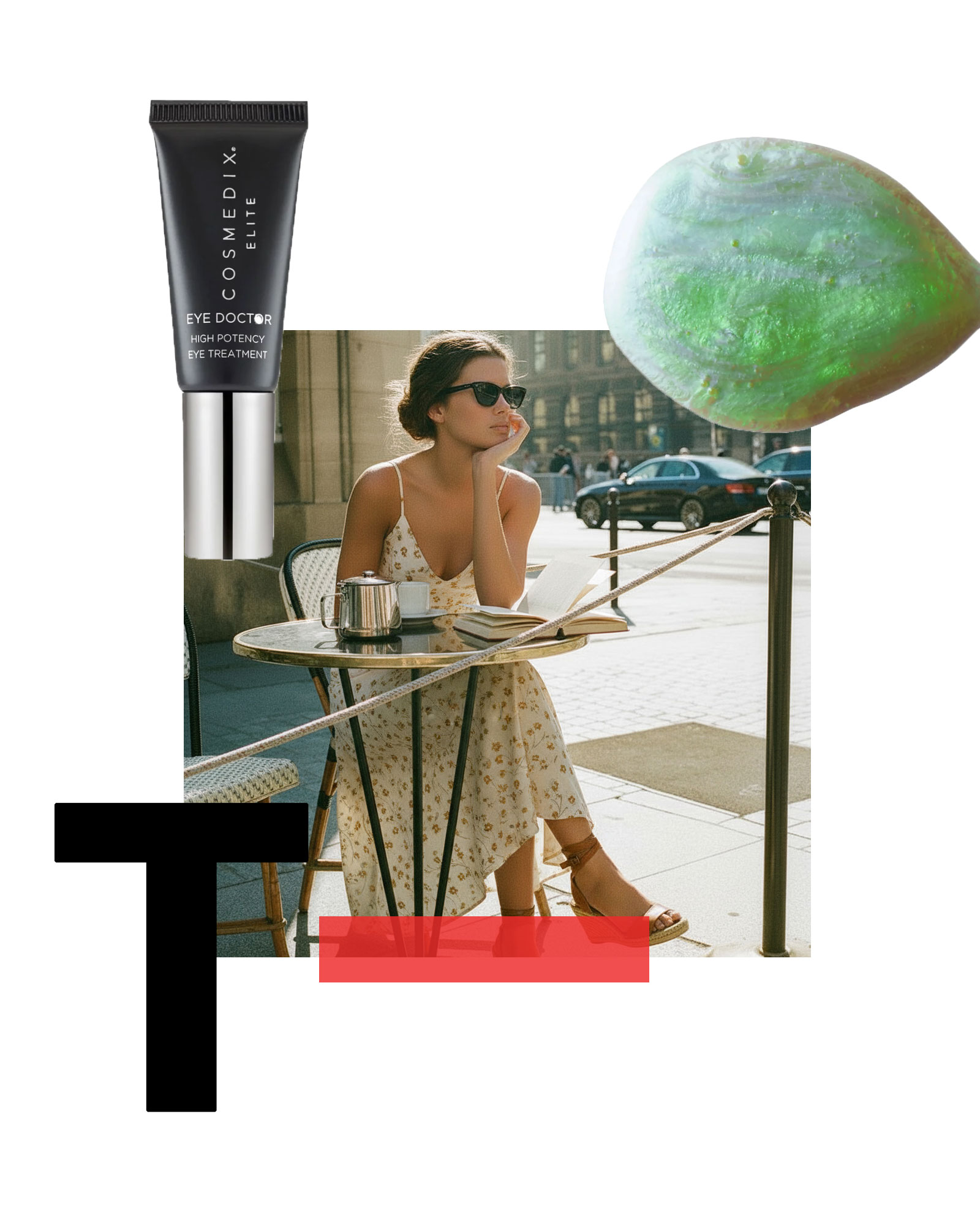
WHAT IT DOES:
TCA is a medium depth peeling agent to remove fine lines and wrinkles, pigmentation and acne scarring. TCA can be very aggressive and can require significant downtime, and is best performed by a professional in a controlled environment.
HOW IT WORKS:
This derivative of acetic acid works to dry up the outermost layers of the skin, causing them to peel and shed over the course of the following week. In doing so, this skin draws away superficial pigment and reveals a fresh new layer of skin cells beneath with a more even tone, texture and vibrancy.
MG SAYS:
TCA is particularly effective in treating hormonal pigmentation like melasma and chloasma that cannot be targeted with laser treatments due to their heat sensitivity. It is also effective at restoring life to extremely sun damaged skin, and results should begin to be visible shortly after the bulk of the peeling has subsided.
WHAT IT DOES:
Green tea is a powerful antioxidant, both internally and externally. It is commonly used in anti-ageing formulas to help soften and smooth skin while offering protection from free radicals. Green tea encourages stimulation to reduce the appearance of puffiness, particularly in the delicate eye area, while protecting against harsh environmental conditions.
HOW IT WORKS:
Green tea contains high levels of antioxidants called ‘catechins’, which help to detoxify the skin and leave it looking and feeling healthy. As a humectant and emollient, it seals in moisture and helps skin maintain hydration levels. Most notably, the anti-inflammatory properties in green tea prove helpful in reducing the appearance of puffiness, especially in the under-eye areas.
MG SAYS:
Drink it and apply it to your skin for numerous benefits! A popular beauty and health remedy used for generations across Asian cultures with good reason.
WHAT IT DOES:
Tea tree oil is a beneficial all-rounder which can help with oily and congested skin. Sourced from Melaleuca trees in Australia, tea tree was traditionally used by First Nations people for its antibacterial and healing properties. Today, it’s popularly used to fight acne-causing bacteria.
HOW IT WORKS:
Both anti-inflammatory and antibacterial, tea tree oil is a powerhouse for blemish-prone skin. Applied topically it can help reduce the appearance of oily skin, and can combat breakouts. It can also help minimise redness and help calm and soothe irritation caused by acne.
Particularly beneficial for those prone to breakouts, this plant extract boasts antiseptic, antimicrobial and germicidal properties that combat acne-causing bacteria. It is also an anti-inflammatory, meaning it soothes and minimises the appearance of redness and irritation often associated with breakouts.
MG SAYS:
This all-round classic, native Australian ingredient is a powerful antiseptic to assist in reducing the appearance of acne. Its fresh, clean fragrance and healing superpowers make it an unsung hero of the skincare world.
WHAT IT DOES:
Titanium dioxide works as a physical protector from UVA and UVB rays as well as a thickening and whitening ingredient in skincare and beauty products. It is a common physical sunscreen active and when used correctly, is effective at preventing signs of ageing from sun exposure.
HOW IT WORKS:
Titanium dioxide increases the lubrication of thicker or denser creams and as a barrier between solar radiation and the skin.
MG SAYS:
Micronised titanium dioxide is the stabler version of titanium dioxide and prevents it from penetrating into the skin. This makes it a safe, effective alternative for those who cannot or do not wish to use chemical SPFs. Titanium dioxide is not quite as effective at UVA protection as zinc oxide, however the difference is minor.
WHAT IT DOES:
Tocopherol Vitamin E is an excellent antioxidant and emollient, used in wound healing.
HOW IT WORKS:
Tocopherol is a naturally occurring molecule in the skin, essential for keeping the tissues moisturised and for protecting the skin from the outside world. It is vital in wound healing, namely for reducing the severity of scar tissue.
MG SAYS:
Tocopherol is a fat soluble molecule that is essential in achieving and maintaining optimal skin health. It is most commonly known for its skin softening and moisturising properties and is particularly beneficial in treating scar tissue and reducing the visibility of scars.
WHAT IT DOES:
Totarol is a gentle antibacterial and non-irritating antioxidant derived from the Totara Tree, which is over 190 million years old.
HOW IT WORKS:
This antioxidant is three times more potent than Vitamin E and neutralises free radicals that damage cellular DNA.
MG SAYS:
The incredible wood of the Totara tree boasts a notable resistance to decay, a characteristic of which has made it most suitable for anti-ageing skin care. Its potent antimicrobial properties also make it a beneficial ingredient in products designed to target acneic and congested skins.

WHAT IT DOES:
Urea is a component of urine, although synthetic versions are used in cosmetics. It is an essential part of the natural moisture factor (NMF) of human skin and a common ingredient in hydrating products. In high volumes, urea acts as a keratolytic to soften skin.
HOW IT WORKS:
In small amounts, urea has beneficial water-binding and mild exfoliating properties for skin. In larger concentrations it can cause sensitivity.
MG SAYS:
Urea has been used in modern medicine for some time in treating the itching and burning effects of psoriasis, dermatitis, and ichthyosis. A known keratolytic urea encourages the desquamation of dead skin cells by increasing moisture in the outermost layer of the skin.
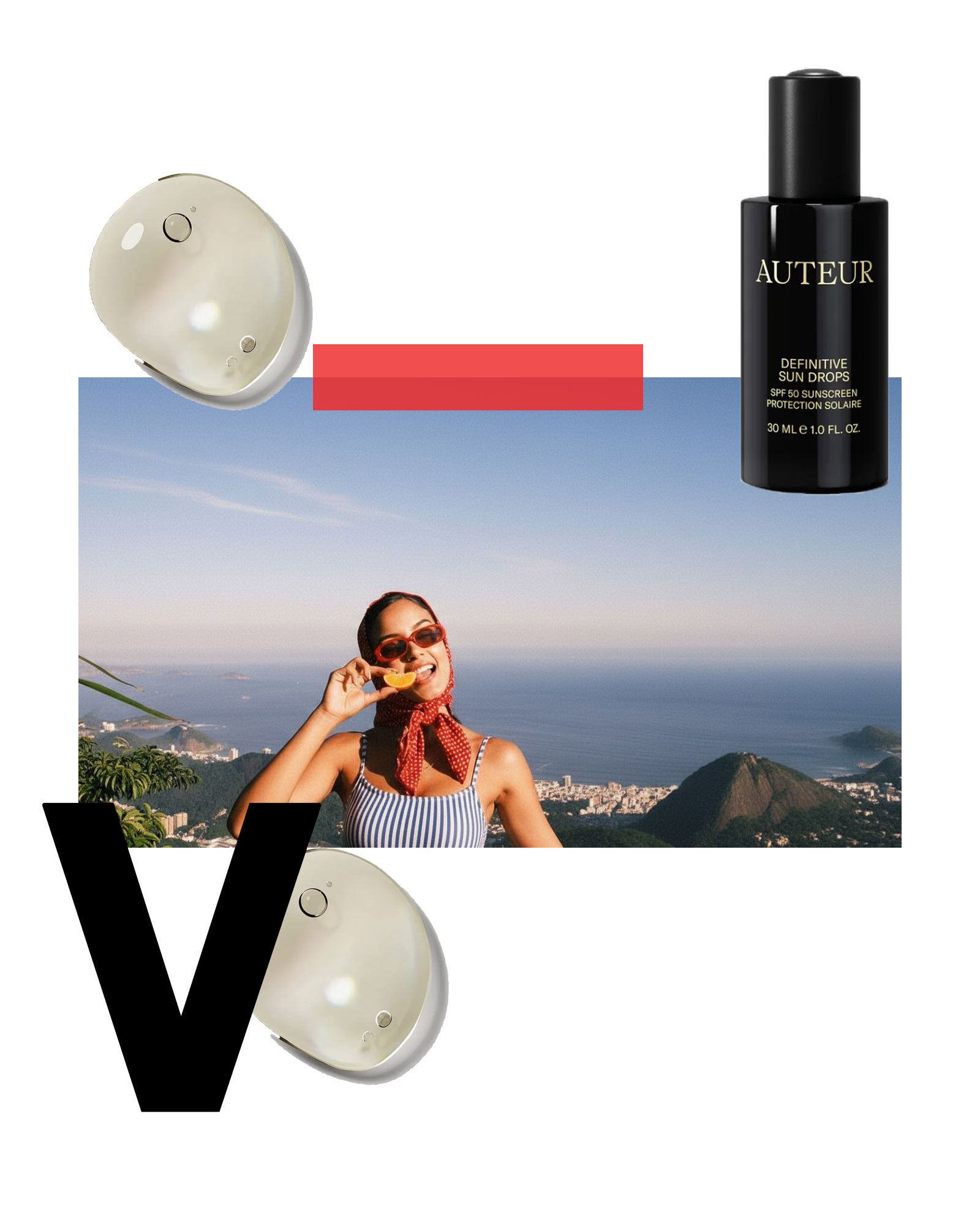
WHAT IT DOES:
The beauty of Vitamin A is that it encourages rapid skin cell turnover, which ultimately addresses a multitude of skin concerns. Retinol is effective for large pores, fine lines, wrinkles, acne, pigmentation, skin laxity and dull or uneven skin tone.
HOW IT WORKS:
Retinol, retinoids and retinal are all derivatives of Vitamin A at different stages within their molecular structure. It can be hard to make sense of each variant as they are eventually converted to retinoic acid, the final product that has powerful skin-changing capabilities.
Retinol is perhaps the most well-known Vitamin A derivative and common in over the counter products. It is ideal for common concerns like fine lines, pigmentation, large pores and textural irregularities.
Retinoids are a more powerful derivative of Vitamin A than retinol. Retinols are eventually converted to retinoids by the skin, the final stage in the conversion prior to retinoic acid. Retinoids are available in prescription form only and are best suited to severe skin concerns such as cystic acne.
Retinal is a variant of retinoids and is the most intense and potent version of Vitamin A.Knowing both when and how to use retinol properly is the key to its success.
MG SAYS:
It’s best to introduce retinol slowly into your skincare regime to avoid any irritation.Generally, the side effects of retinol are limited to a little dryness and redness - though I definitely recommend easing your skin into it, slowly but surely. Start by including a retinol serum two to three times per week and eventually work your way up to nightly use. Incorporate a retinol serum after your evening cleanse prior to applying your eye care and night cream every other night, eventually working up to nightly use. As with the introduction of any new skincare product it usually takes three or so months to see results. As with the introduction of any new skincare product it usually takes three or so months to see results. Consistency is key.Retinol can be used by anyone, aside from those with hypersensitive or compromised skin. That said, Retinol-based products have come leaps and bounds and there are now many lower dose, time release formulas that are far better tolerated and more gentle on the skin. These products are a good option for even the most sensitive skin types amongst us. The benefits of retinol on your body are equal to the benefits of retinol on your face. I recommend employing a retinol moisturiser to target any unwanted hyperpigmentation on your body - or targeting chest and back acne.
WHAT IT DOES:
Vitamin C is one of the most popular and impressive ingredients in skincare. And for good reason, Vitamin C is perhaps the most effective vitamin in fighting against free radical damage while also brightening, treating sun damage and strengthening collagen production. It works to improve the overall texture of the skin, and when combined with other key ingredients can be a gamechanger in a morning routine.
HOW IT WORKS:
A powerful antioxidant, Vitamin C is a hero in destroying free radicals and working to improve any leftover damage. It inhibits melanin production, making it effective against pigmentation and the overall lustre of the skin. When combined with other carriers such as ferulic acid or Vitamin E, Vitamin C’s impressive properties can be supercharged.
MG SAYS:
Vitamin C can be great to use under sunscreen as research has shown that it boosts sunscreen’s efficacy by defending skin from free radicals produced by sun exposure. The skin can be more sensitive when using Vitamin C as the new skin cells have not been exposed to sunlight, so be sure to always wear an SPF in conjunction.
WHAT IT DOES:
A much-loved skincare stalwart, Vitamin E is a naturally derived, potent substance that works to supercharge other antioxidants, accelerating their results and efficacy. Vitamin E is best known for its ultra-nourishing, ultra-hydrating properties and is great for soothing and rejuvenating the skin. It’s also a potent anti-ageing ingredient, enhancing the protective functions of the skin to withstand free radical damage while decreasing the appearance of fine lines, wrinkles and scars by ensuring cells remain hydrated and supple.
HOW IT WORKS:
Thanks to its antioxidant properties, Vitamin E helps fight off free radicals and prevent further damage by increasing anti-inflammatory support systems. Its efficient hydrating mechanisms leave the skin’s barrier plump and firm, arming it with ample hydration.
MG SAYS:
Naturally present in the skin but depleted with age and sun exposure, topical application of vitamin E can have many benefits. As an antioxidant, it can fight free radicals and offer substantial anti-inflammatory support. It can also keep skin hydrated by strengthening the skin’s natural barrier and therefore reducing water loss.
WHAT IT DOES:
Vitamin F is composed of polyunsaturated fatty acids (including linoleic acid, arachidonic acid and vaccenic acid). As it’s liposoluble, Vitamin F helps cells in the epidermis to retain water content and prevent water from escaping through evaporation. Vitamin F is essential to the lipid barrier that lies on top of the epidermis, which improves the skin’s resistance to external aggressions.
HOW IT WORKS:
When applied topically, Vitamin F supplies skin with a collection of omega fatty acids which are wonderful for the skin’s barrier function. As a carrier oil, Vitamin F facilitates the functions of other active ingredients, making them even stronger and allowing for proper penetration of actives and acids.
MG SAYS:
People wax lyrical about oils such as rosehip, chia and argan for good reason – mainly because they contain Vitamin F – a carrier oil that can deeply penetrate the skin’s surface and take other ingredients with it.
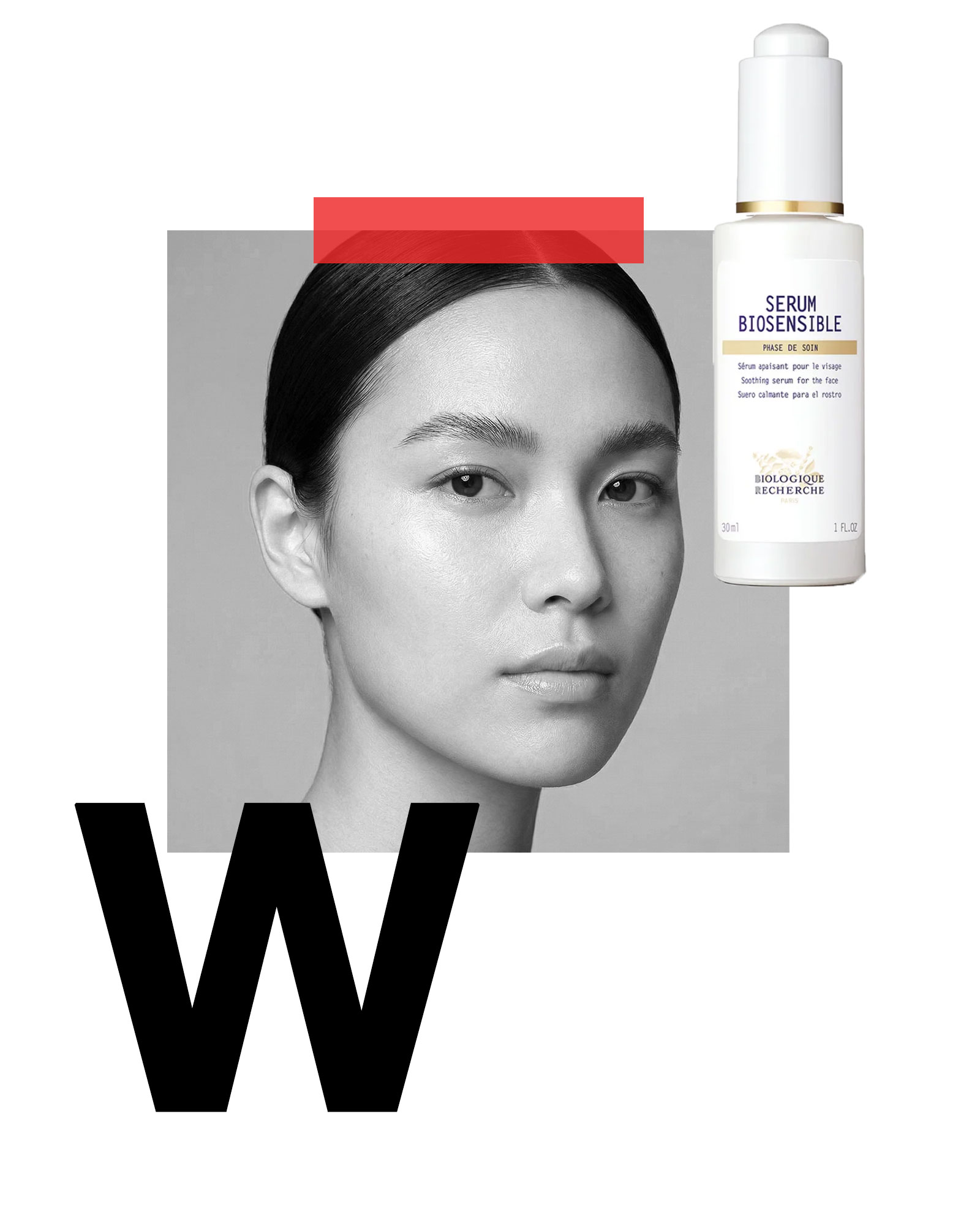
WHAT IT DOES:
Walnut extract is packed with antioxidants and helps to protect the skin from environmental aggressors. It boosts the body’s natural antioxidant functions, stimulates keratinocyte growth and limits the activity of elastase, the enzyme responsible for the degradation of elastin. It’s also championed for its protective firming and toning capabilities.
HOW IT WORKS:
Crushed walnuts can be used as a gentle exfoliator, while walnut oil is a potent antioxidant which helps fend off free-radicals and prevent damage from pollution and irritants.
MG SAYS:
Walnut extract contains bountiful amounts of antioxidants which are wonderful for skin as they protect and defend from the elements.
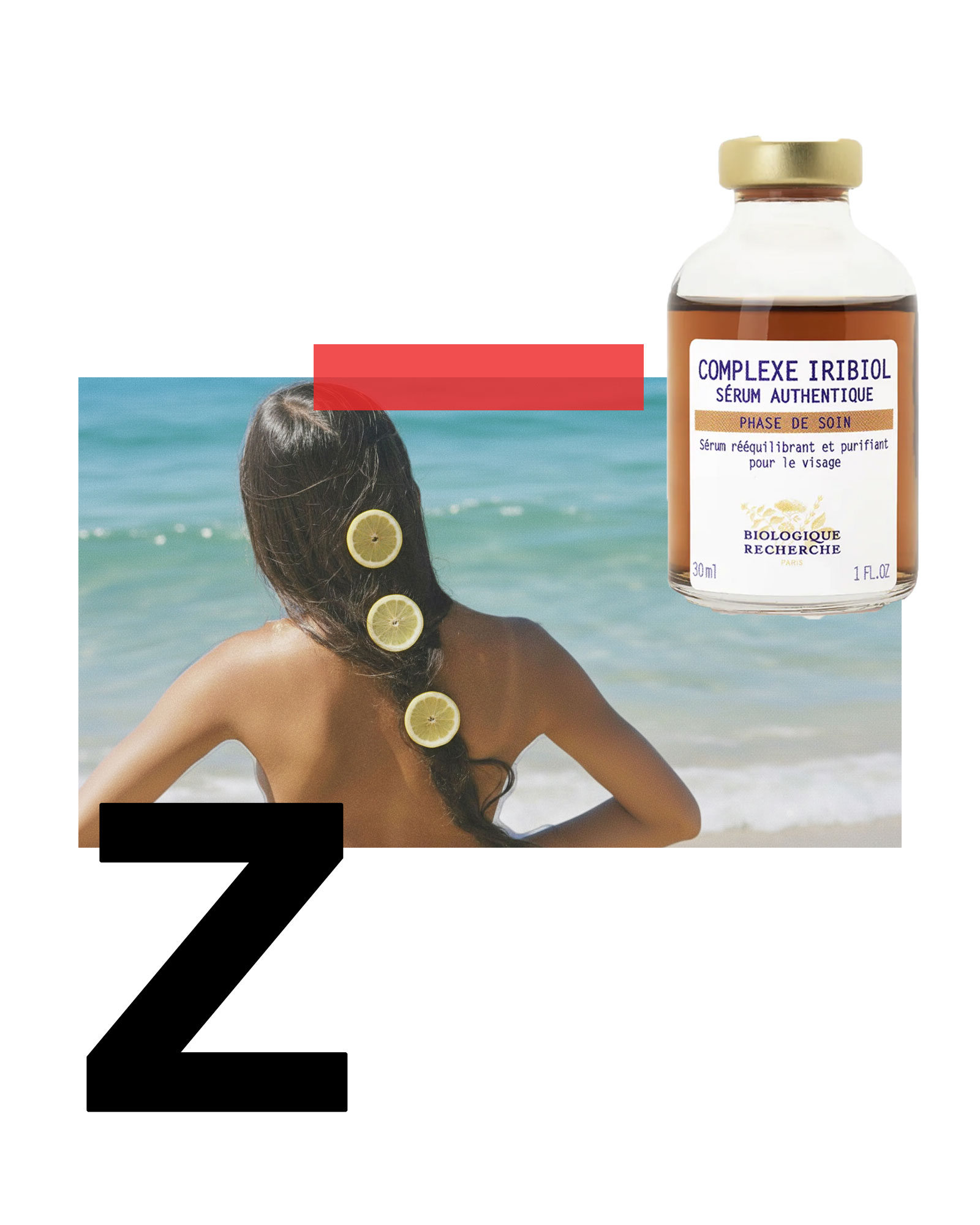
WHAT IT DOES:
Zinc is one of the most important minerals contributing to the health of our skin. It is a key mineral required by the body for the production of collagen, and it also acts as an astringent, anti-inflammatory and healing agent. Deficiency in zinc can lead to a range of conditions from hair loss to lesions and fatigue, low immunity from colds and rough and itchy skin. When used as a broad spectrum SPF, zinc is suitable for all skin types.
HOW IT WORKS:
Zinc aids skin healing and prevents acne by regulating the activity of the oil glands. It promotes a healthy immune system and the healing of tissues and is also an antioxidant which helps to fight and prevent the formation of free radicals.
MG SAYS:
Zinc is an essential mineral for human immunity to operate at its peak and is also essential for wound healing. Remember this when treating blemishes and congestion as it will work to rapidly reduce inflammation and heal skin.
WHAT IT DOES:
Zinc oxide is an earth mineral used as a thickening, lubricating, and sunscreen active ingredient. Along with titanium dioxide, zinc oxide offers minimal risk of skin sensitisation. As a sunscreen, it is effective in providing protection against both UVA and UVB rays. Zinc oxide is used in makeup to impart opacity to products like foundations, particularly powder-based makeup, and is also a powerful anti-inflammatory ingredient.
HOW IT WORKS:
Zinc oxide acts as a physical barrier between UVA and UVB rays and the skin to prevent sunburn and cellular degeneration. A popular physical sunscreen active ingredient, zinc sunscreens have the added benefit of being great for oil regulation and for its anti-inflammatory properties.
MG SAYS:
Zinc oxide and physical sunscreens are wonderful alternatives for those who are sensitive to or do not wish to use chemical SPFs. For added protection, zinc oxide may be layered on top of a chemical SPF, especially during the summer months and when outside during high UV periods of the day.
WHAT IT DOES:
Zeolite removes and traps heavy metals in the skin, removing pollution and metals to clarify and clear the complexion.
HOW IT WORKS:
Zeolite is a powerful detoxifying agent that draws heavy metals and removes them from the skin. It is especially beneficial at removing traces of pollution on the complexion that can be particularly damaging to our skin cells.
MG SAYS:
Zeolite is a powerhouse detoxifier that is found in masks and cleansing products. It is best for those who live in densely populated areas or are struggling with congestion and blemishes.